Google began rolling out the new Google Search Generative Experience (SGE) to people on the Search Labs waitlist.
SGE adds generative AI capabilities to Google Search results. Here’s a look inside the SGE on desktop and mobile and how SGE results compare to typical Google SERP features.
How To Get Access To Google SGE Via Search Labs
To access SGE and other experimental features, you must sign up for the Search Labs waitlist.
SGE features will be available in Google Chrome for desktop users and in the Google app for iOS and Android users.
Watch for an email from Google or a notification from the Google app welcoming you to Search Labs.
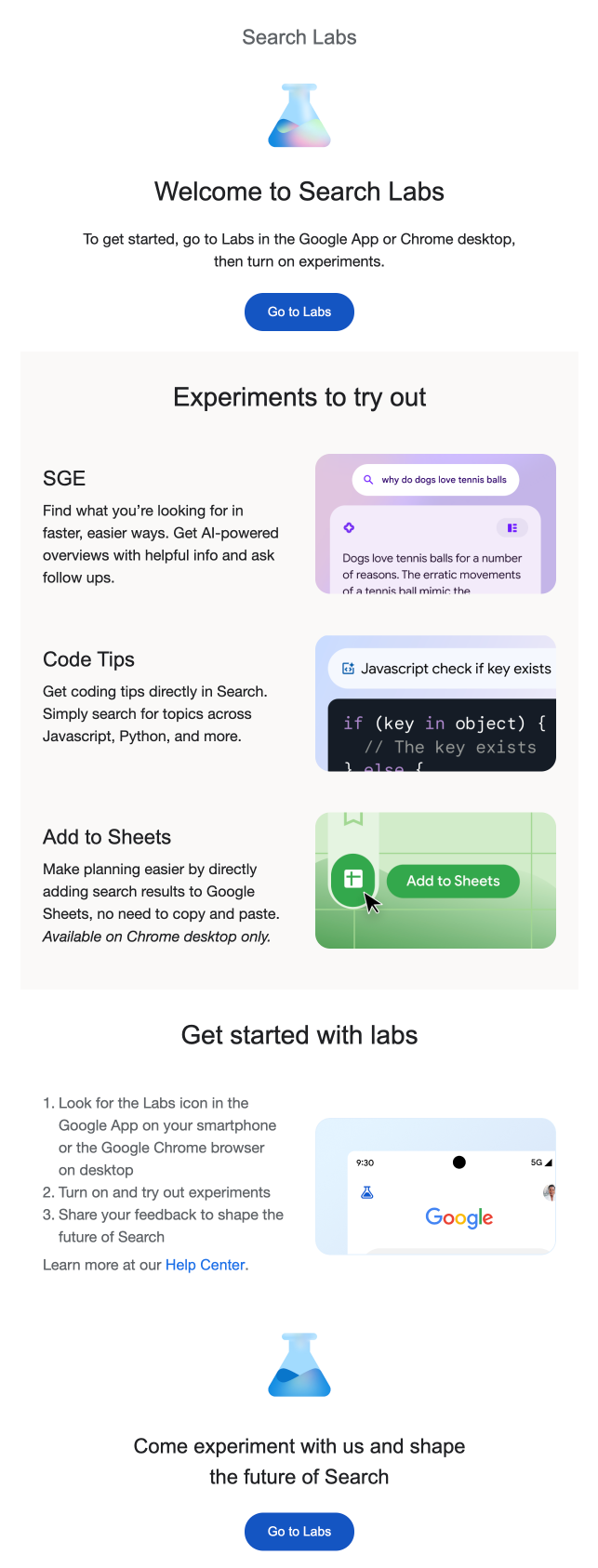 Screenshot from Gmail, May 2023
Screenshot from Gmail, May 2023Once you receive your welcome, you can find SGE on the Search Labs page and other new experimental features like Code Tips and Add To Sheets.
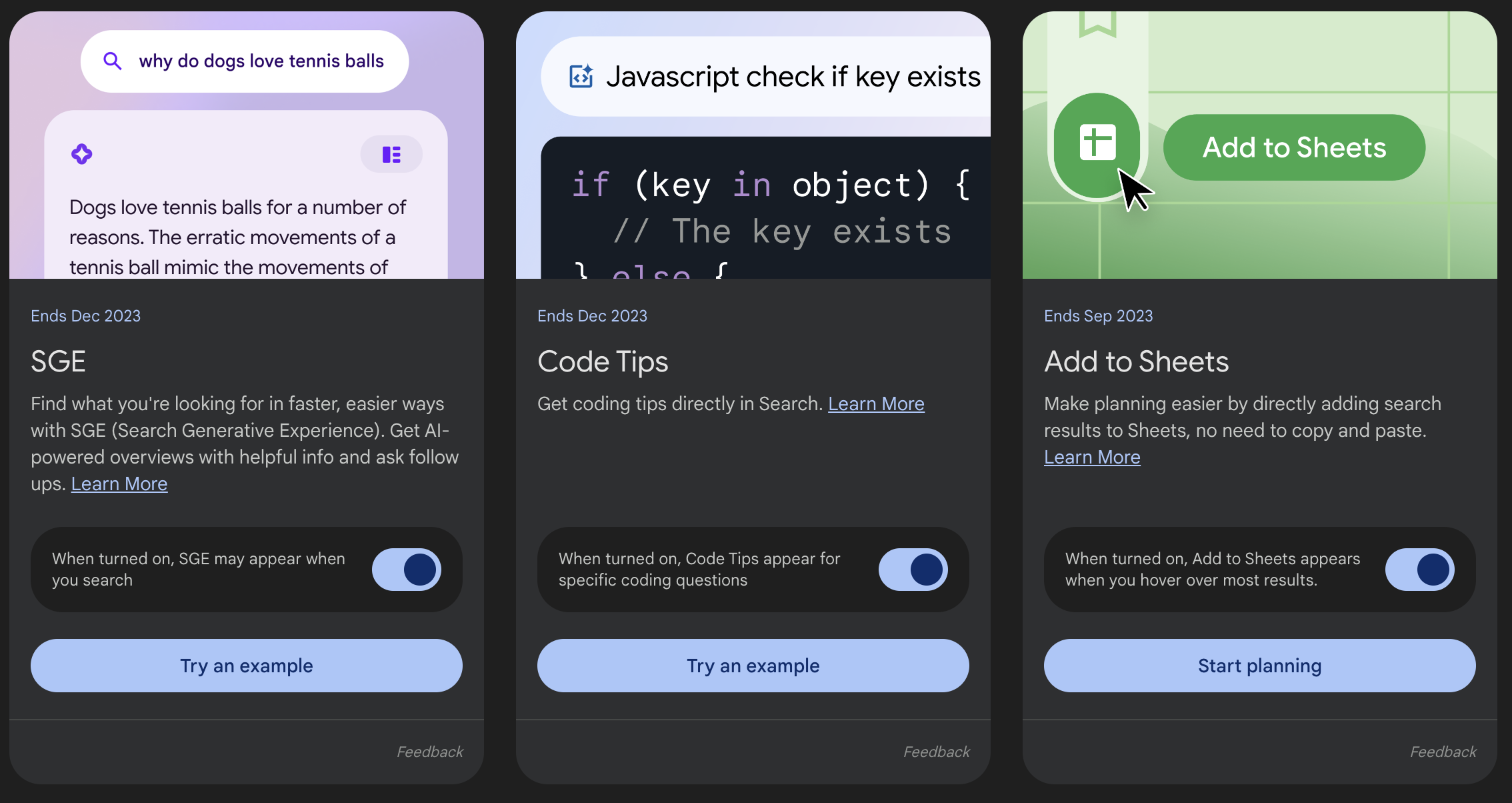 Screenshot from Google, May 2023
Screenshot from Google, May 2023Note that Add to Sheets is not available for mobile users in the Google app.
SGE For Desktop & Mobile Users
Here’s a look at Google with SGE enabled in Google Chrome on a desktop. You can see AI conversation prompts below the search bar.
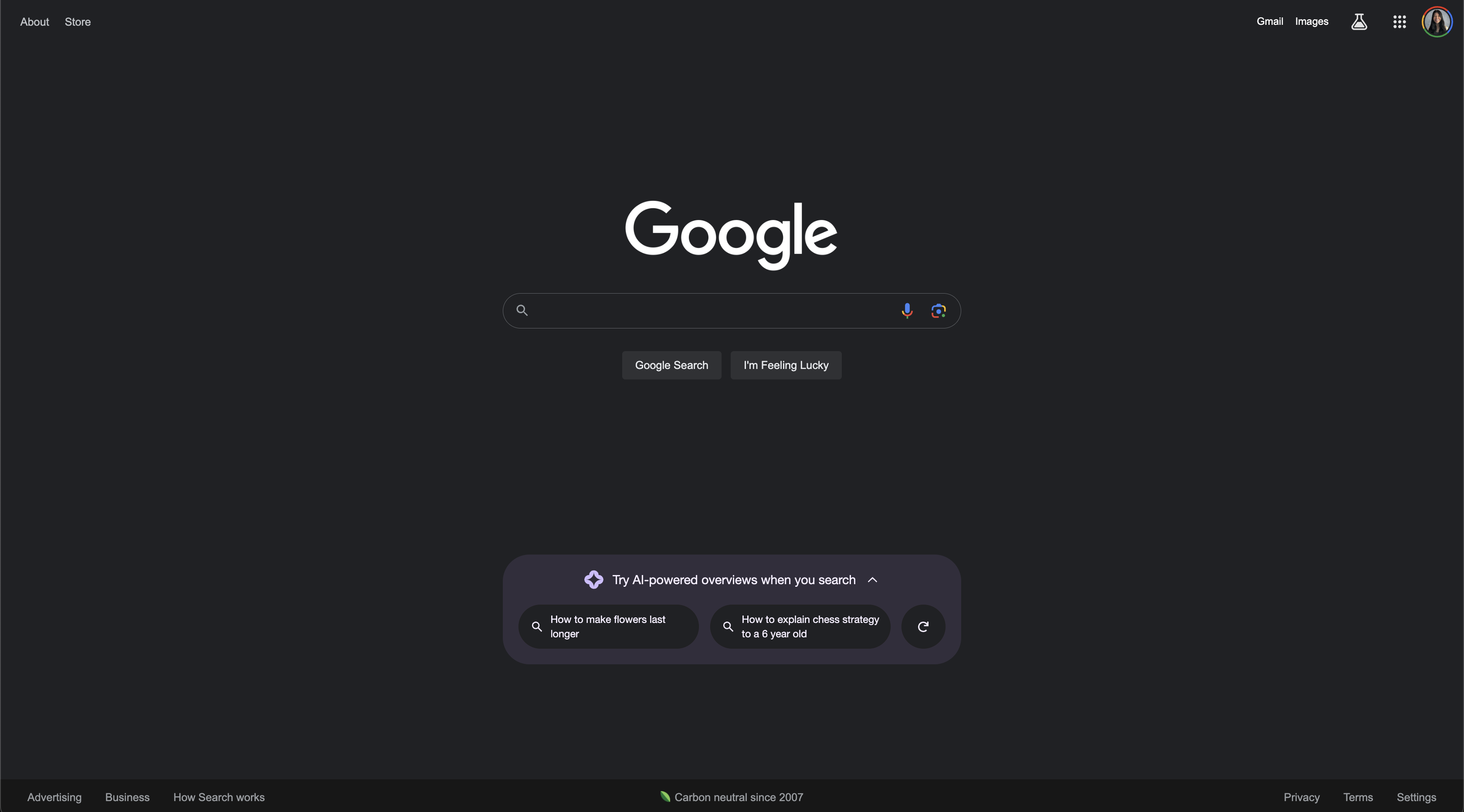 Screenshot from Google, May 2023
Screenshot from Google, May 2023SGE in the Google app on mobile offers a similar option, labeled Converse, below the search bar. This leads to a screen with prompts to start your SGE conversation.
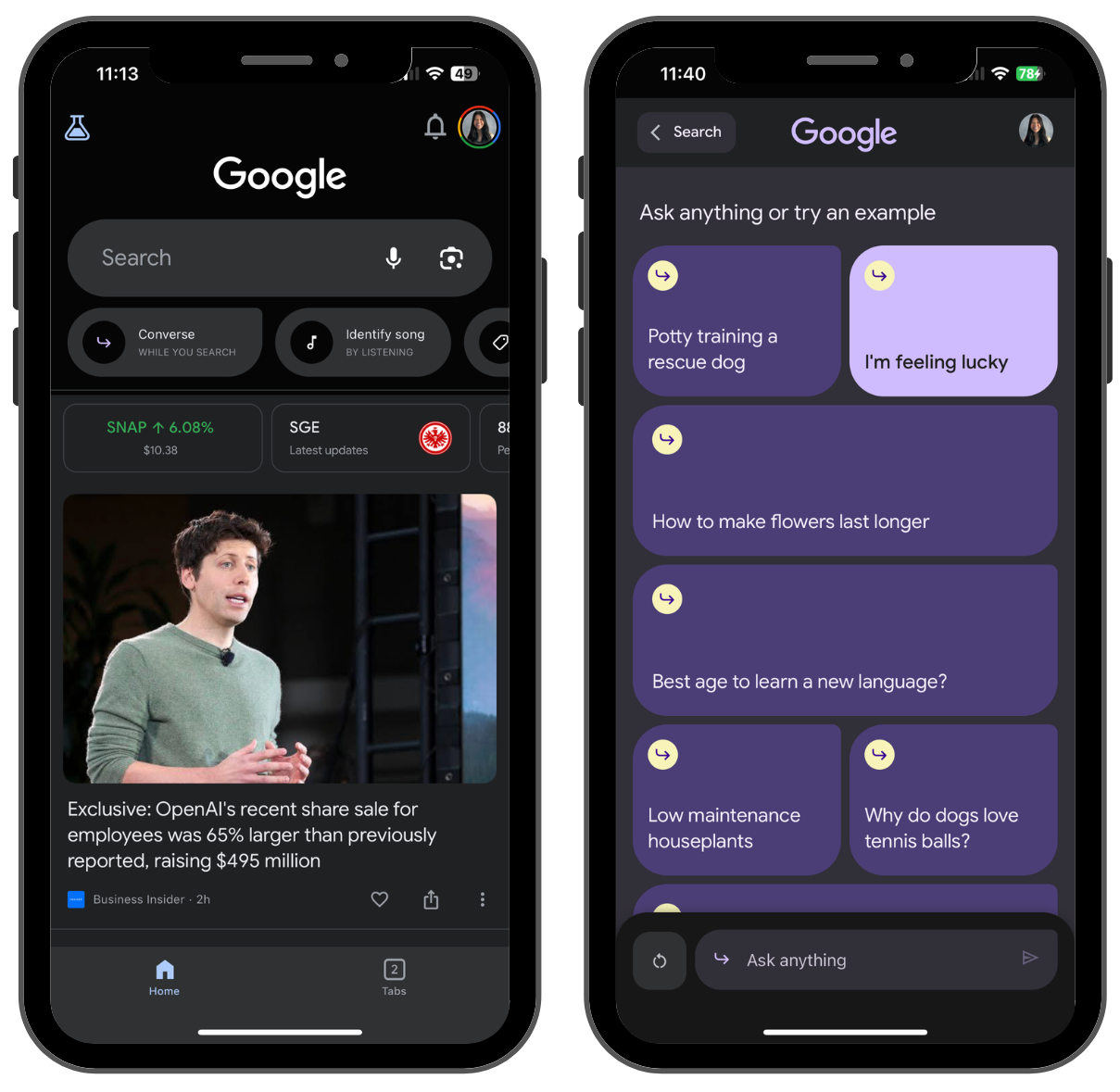 Screenshot from Google, May 2023
Screenshot from Google, May 2023Now, let’s look at Google SGE responses compared to standard Google SERP features.
1. SGE For SERPs With FAQ, People Also Ask, & Knowledge Panel Features
First, I tried a simple question: What is Google Bard?
Google SGE provided an answer using six sources to answer the question. Five of the six sources about Google Bard were from publishers, while one was an official Google Bard Help page.
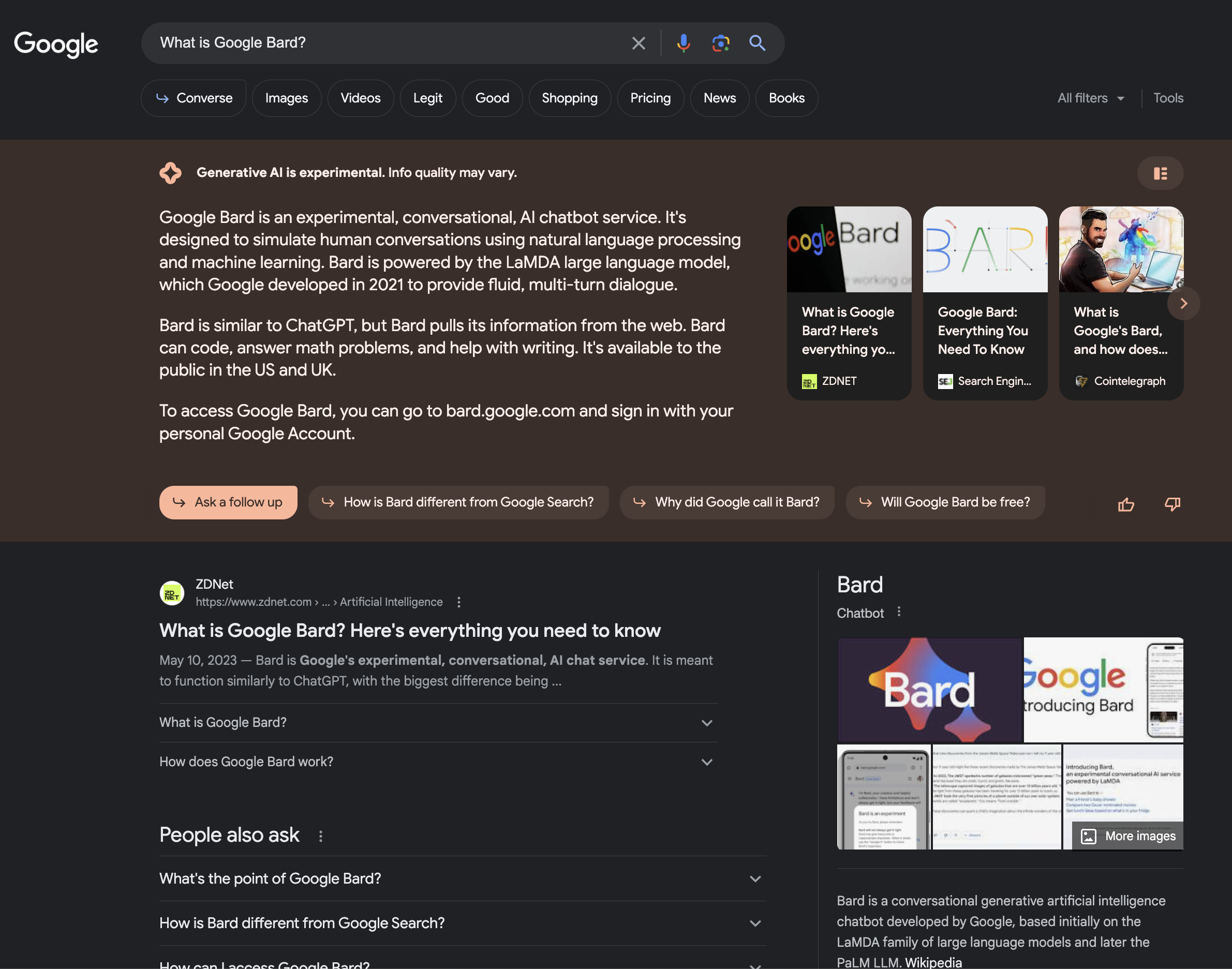 Screenshot from Google, May 2023
Screenshot from Google, May 2023You can toggle the viewing option at the top right of the AI result to see which sources are used to craft the summary.
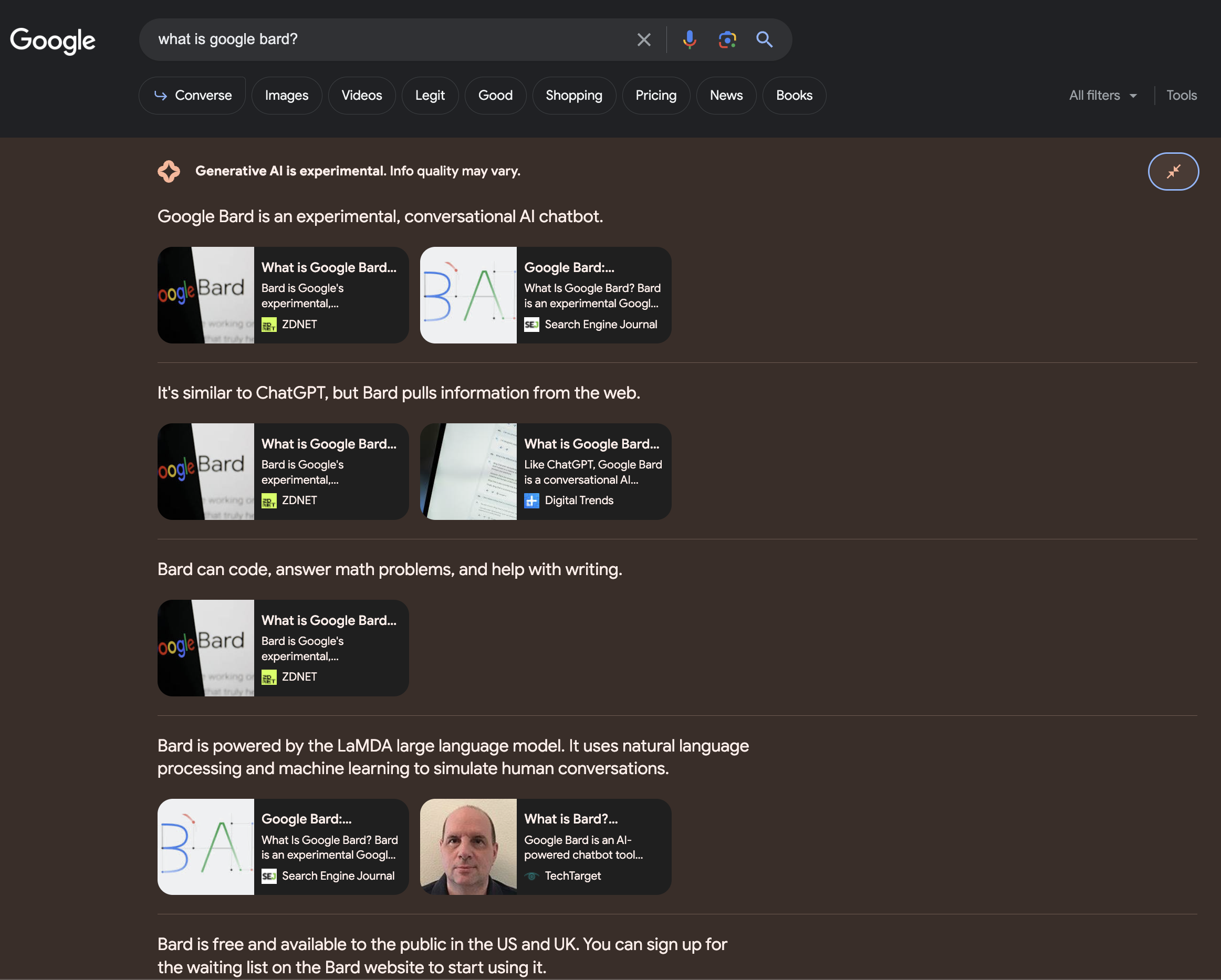 Screenshot from Google, May 2023
Screenshot from Google, May 2023Beneath the generative AI response, you can see the standard Google search results appear with organic search results, people also ask, and a knowledge panel.
While you may have access to the Add to Sheets feature in Search Labs, it only appears on organic search results – not the AI-powered answer.
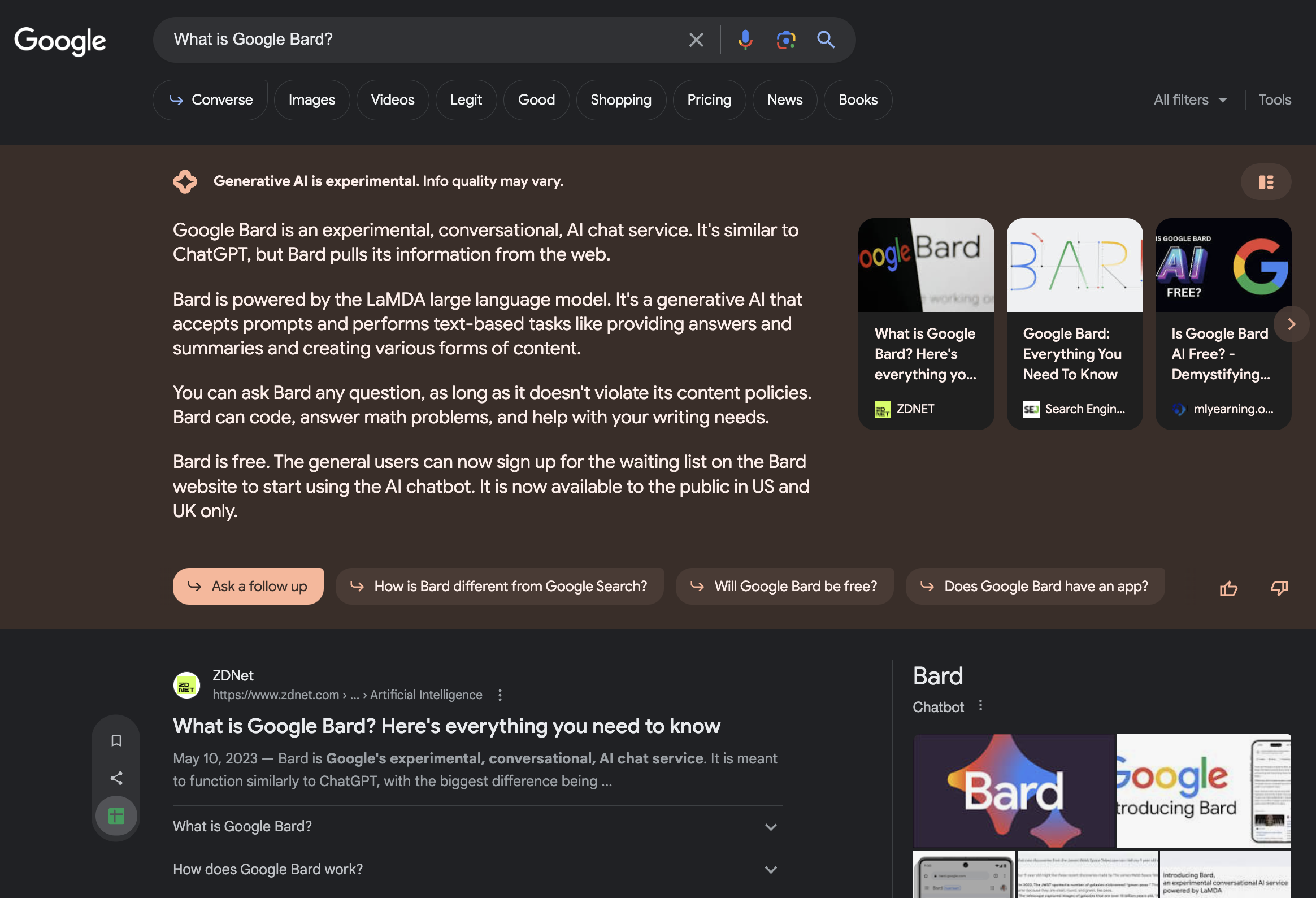 Screenshot from Google, May 2023
Screenshot from Google, May 2023Add to Sheets simply adds the search result to an existing or new Google Sheet.
In the Google app with SGE, you can see a variation of the generative AI response, followed by the knowledge panel, people also ask, and organic search results.
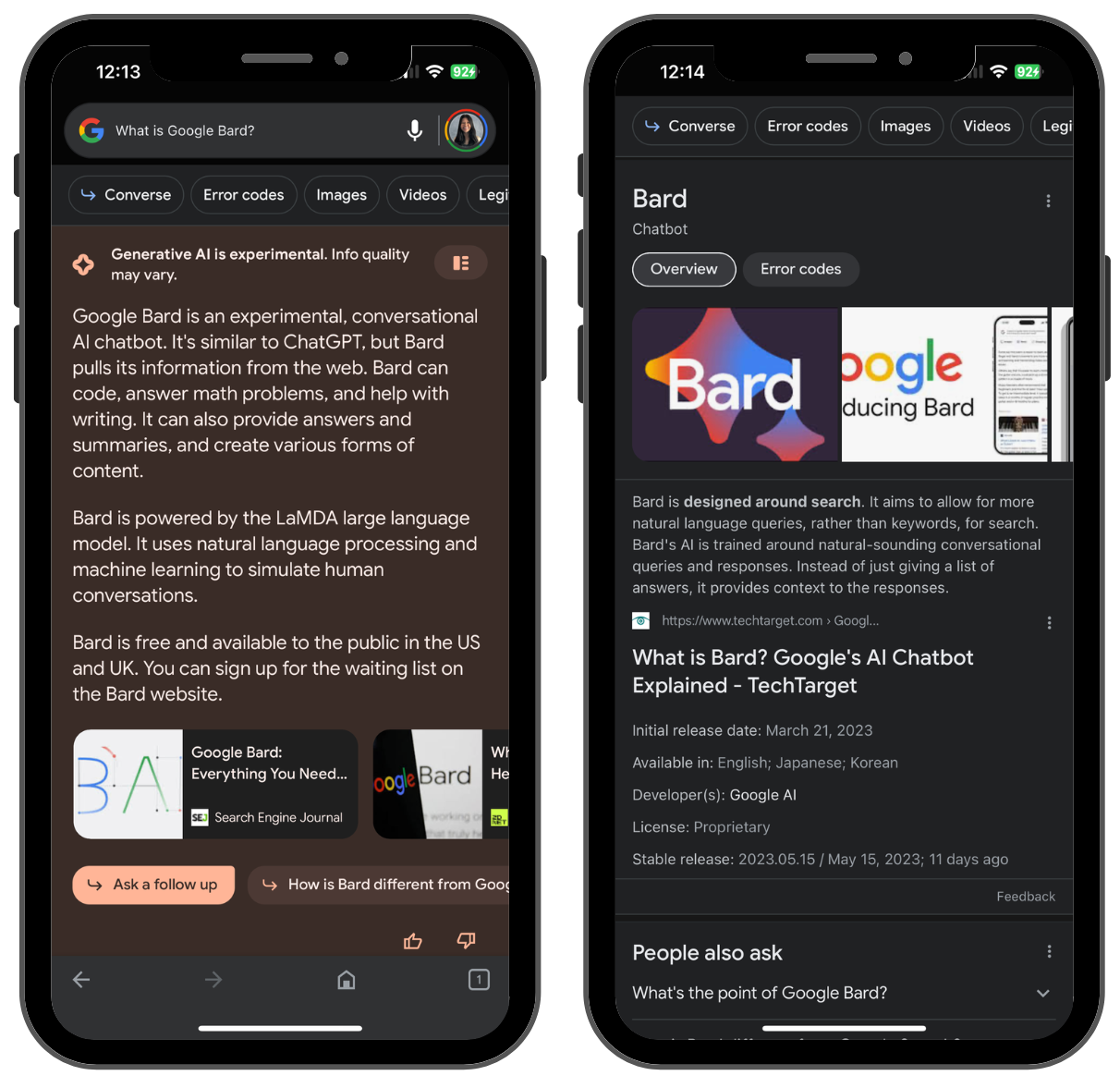 Screenshot from Google, May 2023
Screenshot from Google, May 2023In this example, you can see that the sources chosen by SGE do not always match the top organic search results.
2. SGE For SERPs With The Local Pack Feature
Next, I asked about the top Italian restaurants in Phoenix,
Google SGE provided an answer similar to the local pack.
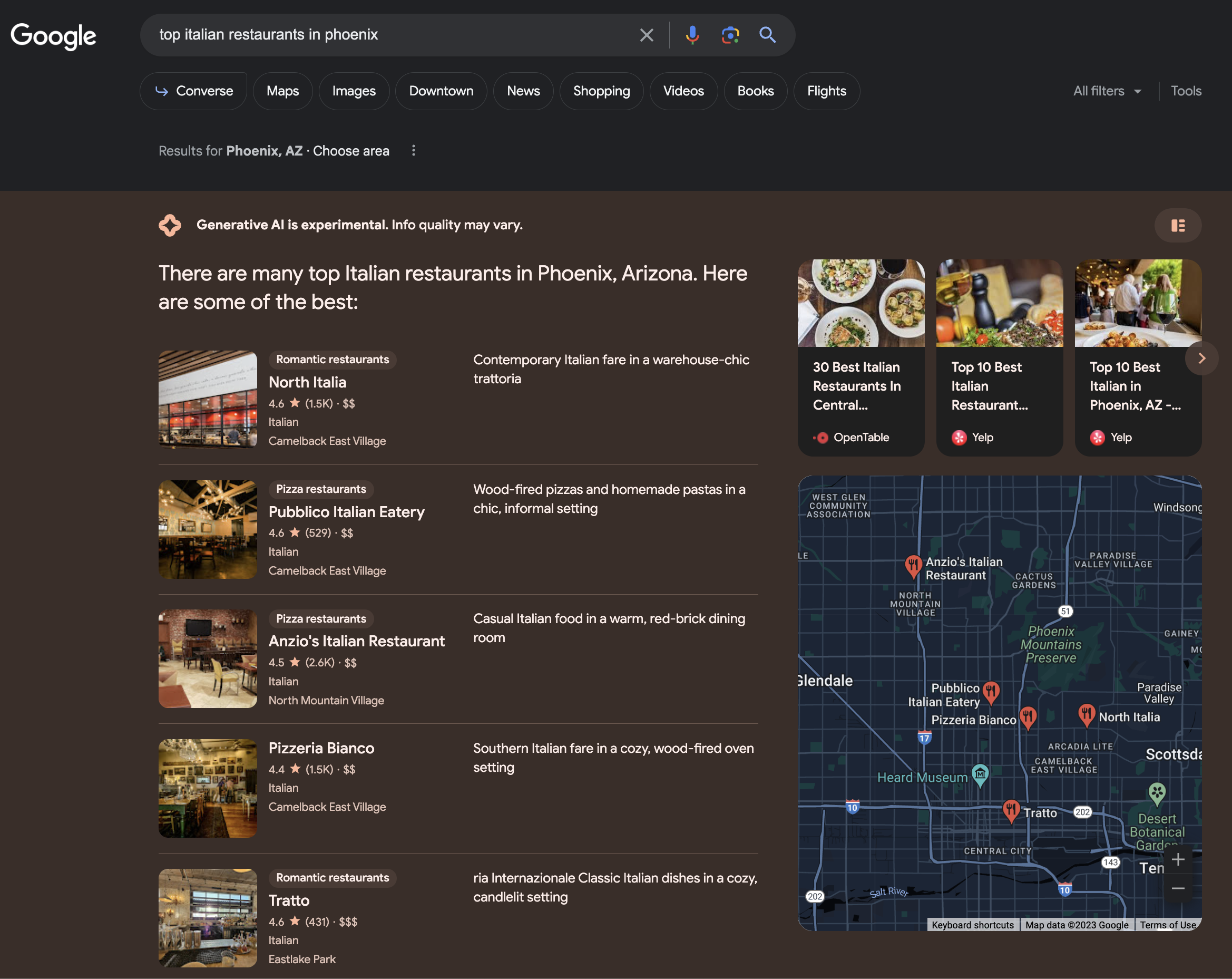 Screenshot from Google, May 2023
Screenshot from Google, May 2023The top three restaurants the generative AI chose slightly differed from those shown in the local pack on the desktop browser.
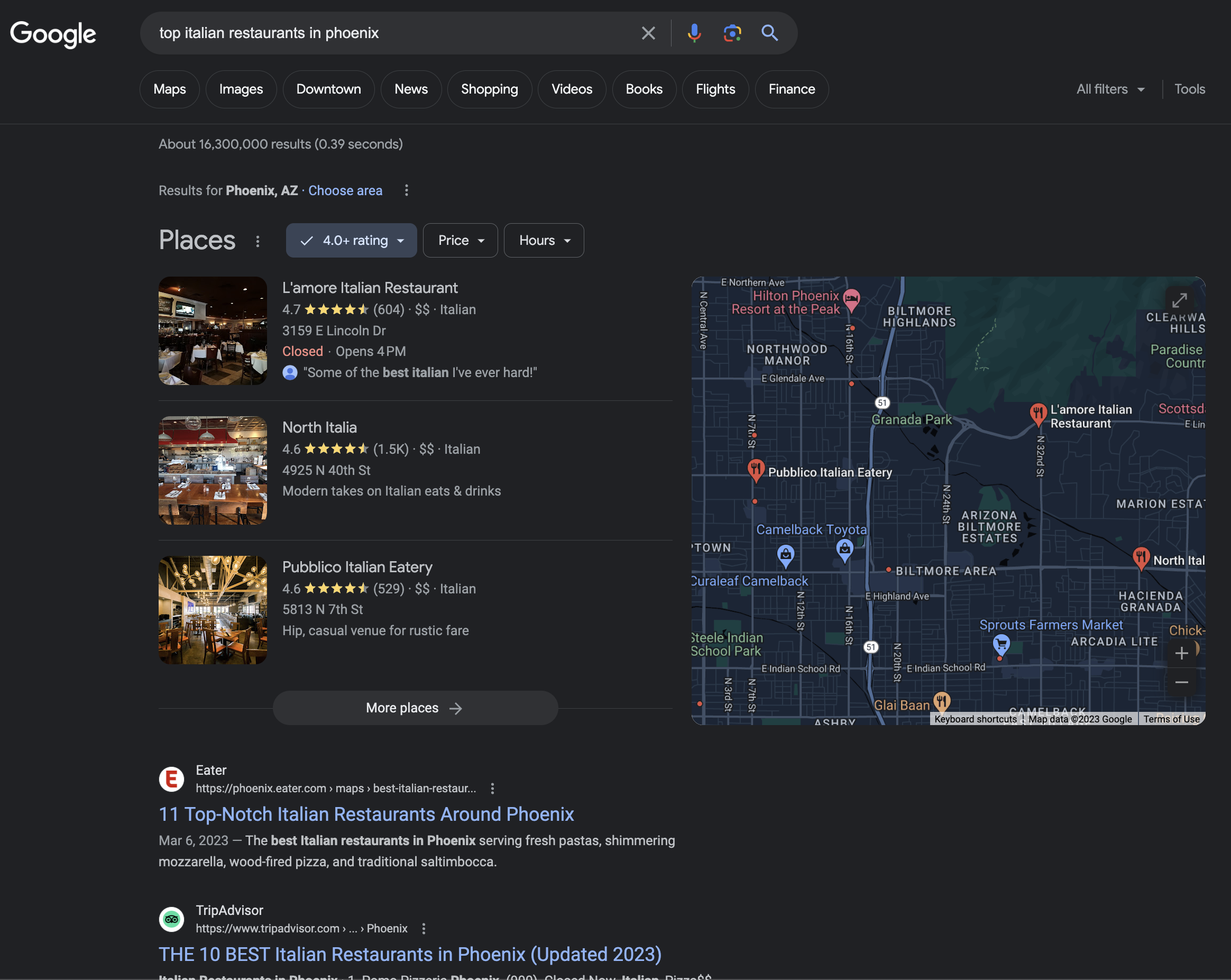 Screenshot from Google, May 2023
Screenshot from Google, May 2023The generative AI response on mobile provided the same restaurants as the local pack, followed by the usual local pack and organic search results.
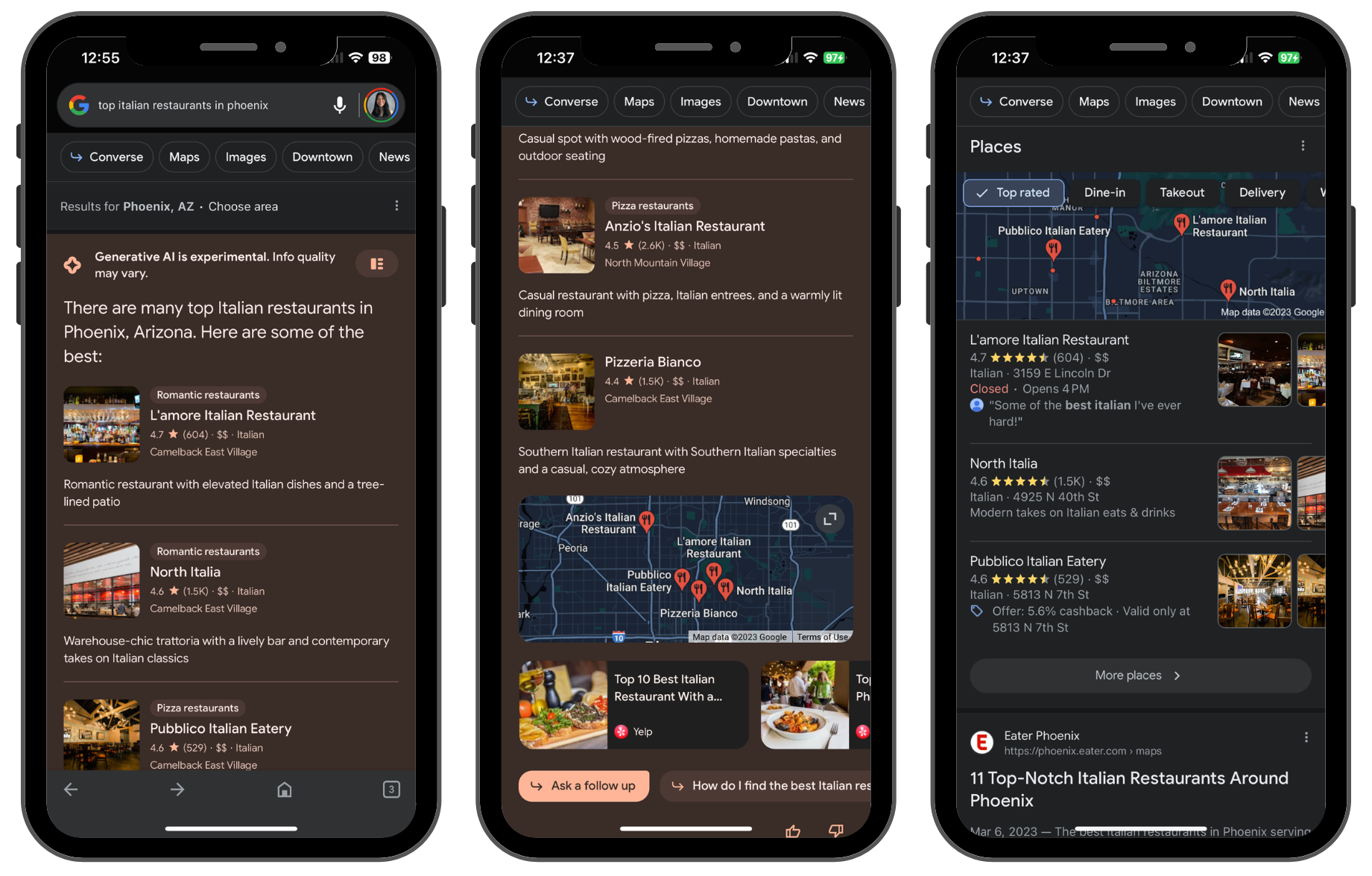 Screenshot from Google, May 2023
Screenshot from Google, May 20233. SGE For SERPs With Sitelinks
For this one, I searched for Semrush, which usually includes sitelinks, people also ask, and a knowledge panel.
In this instance, Google asked if I wanted to “Get an AI-powered overview for this search?”
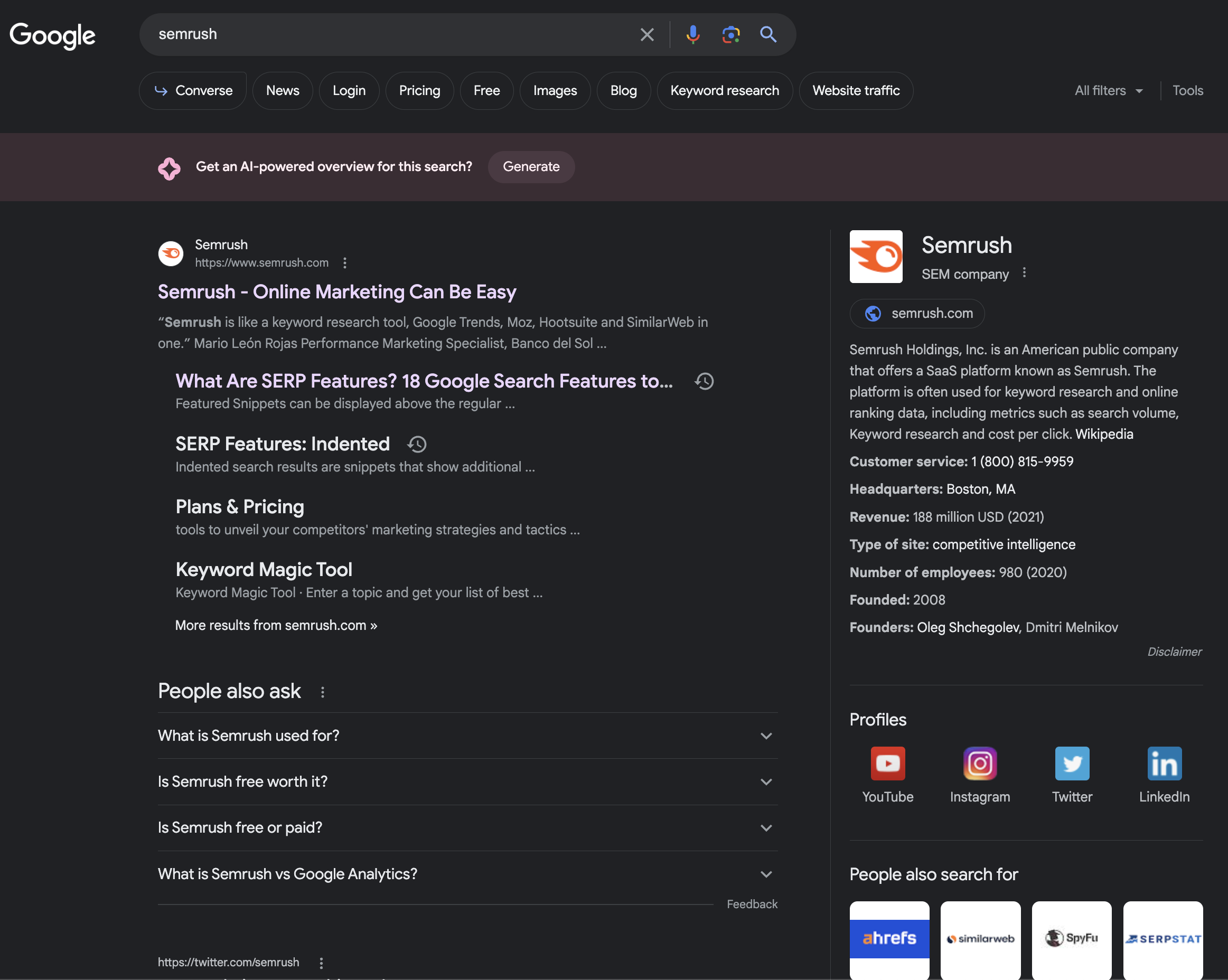 Screenshot from Google, May 2023
Screenshot from Google, May 2023SGE provided the following answer using third-party sources about Semrush after I clicked on Generate.
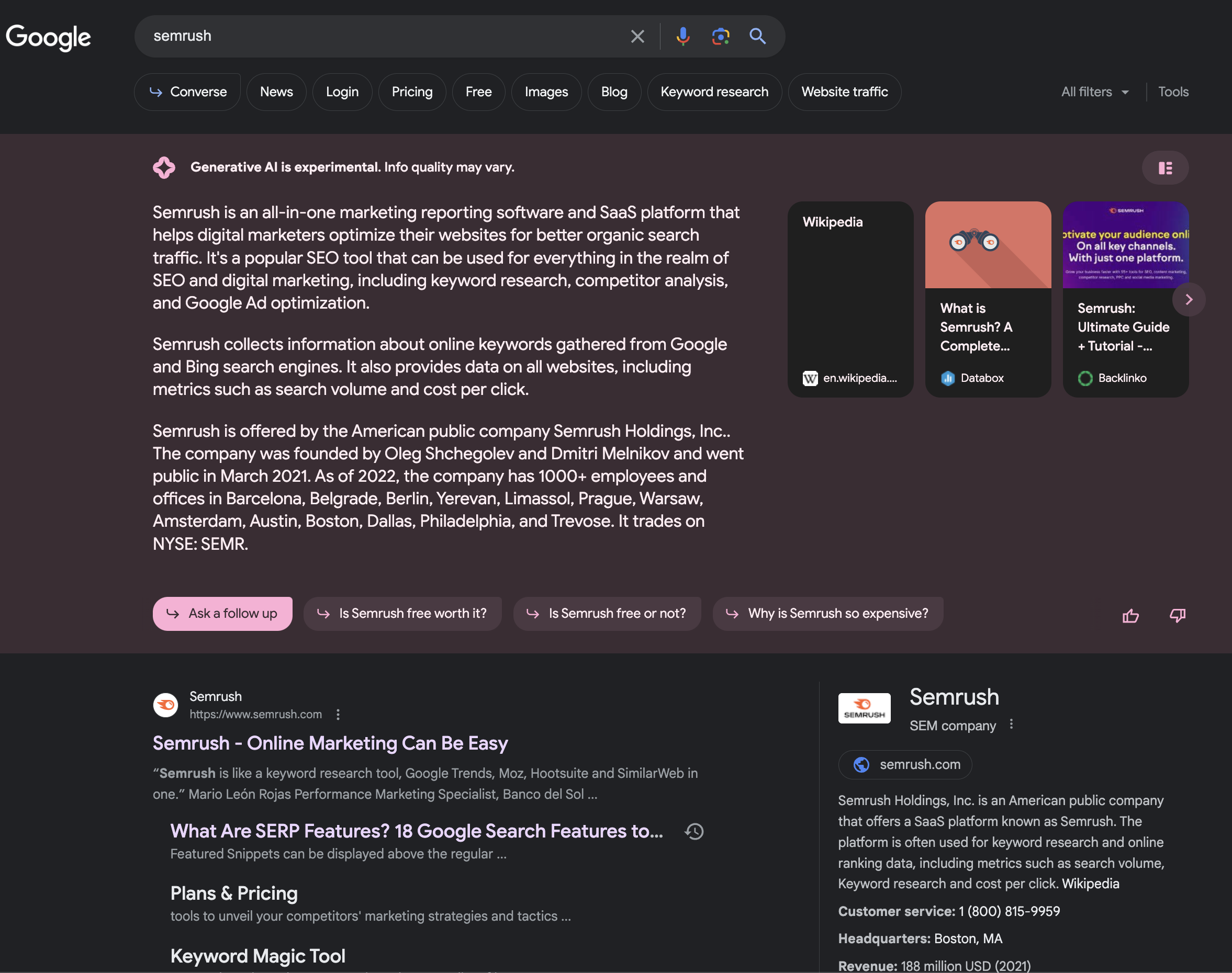 Screenshot from Google, May 2023
Screenshot from Google, May 2023The generative AI provided a similar response in the Google app after asking if I wanted the AI results.
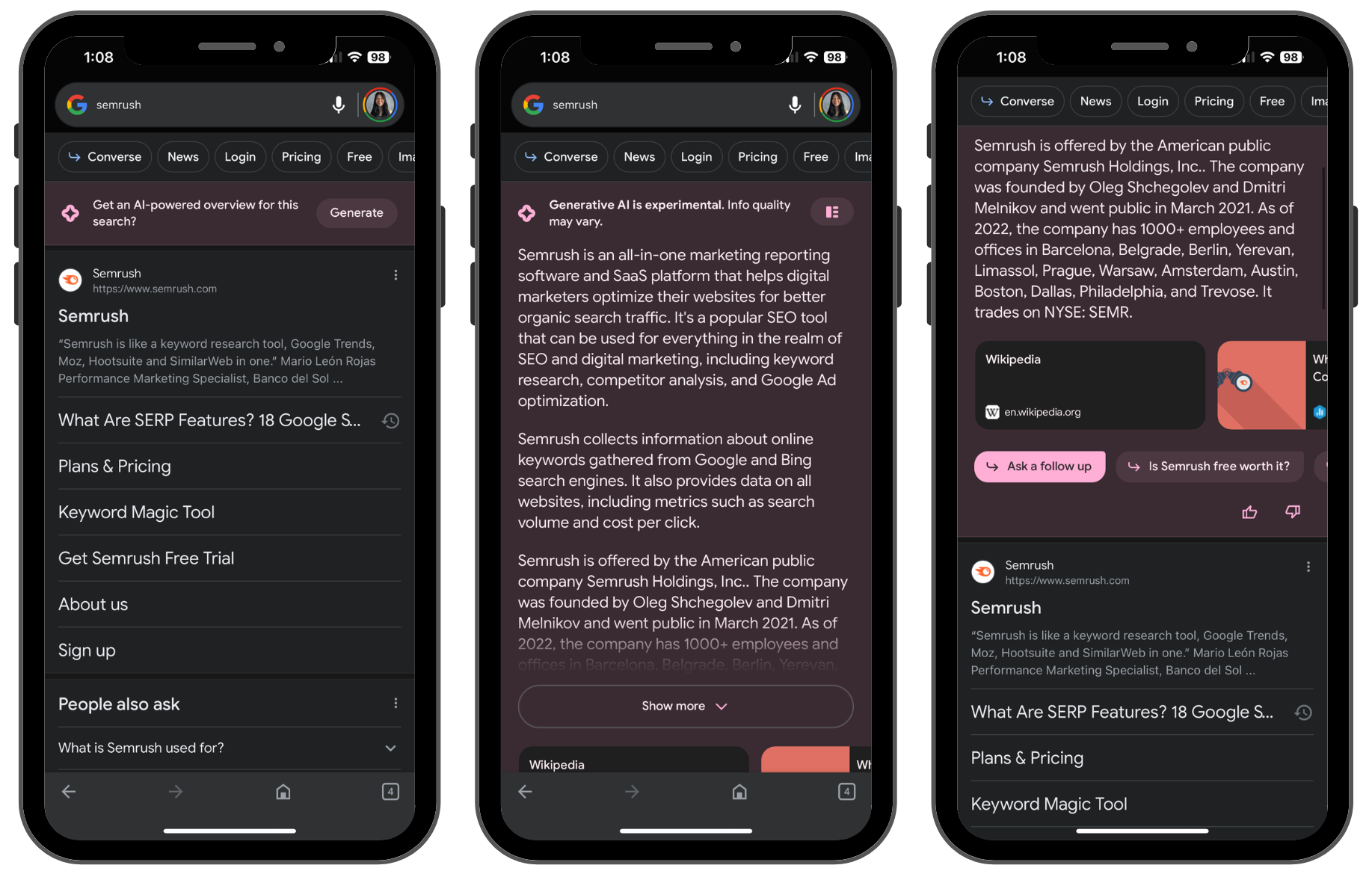 Screenshot from Google, May 2023
Screenshot from Google, May 20234. SGE For SERPs With Shopping & Reviews
Are you looking for a 4k camcorder under $500? Here are the shopping results with reviews provided by SGE, which include advice on what to look for in a camcorder.
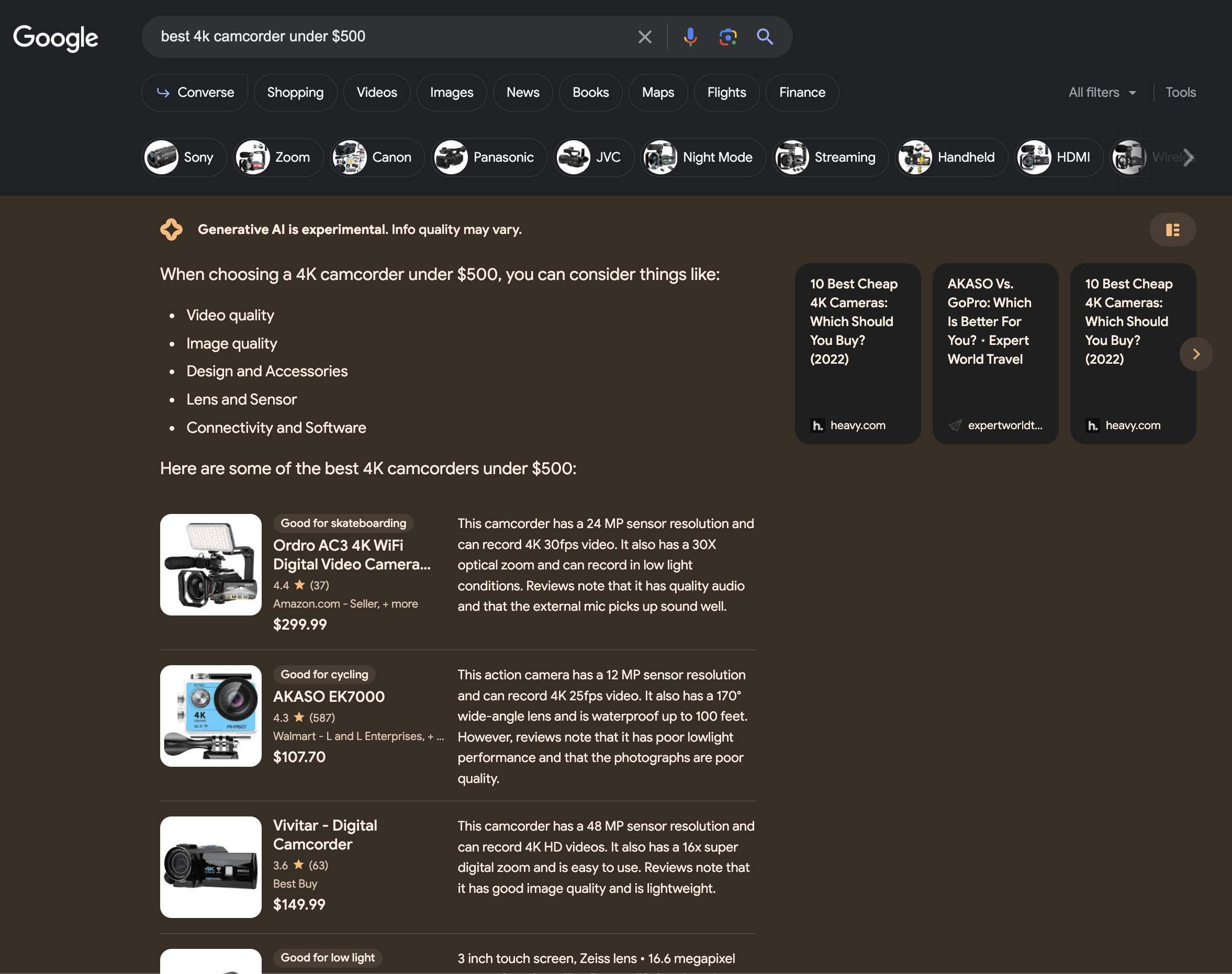 Screenshot from Google, May 2023
Screenshot from Google, May 2023Standard SERPs only show where to buy a camcorder that fits your search query, followed by shopping results with reviews.
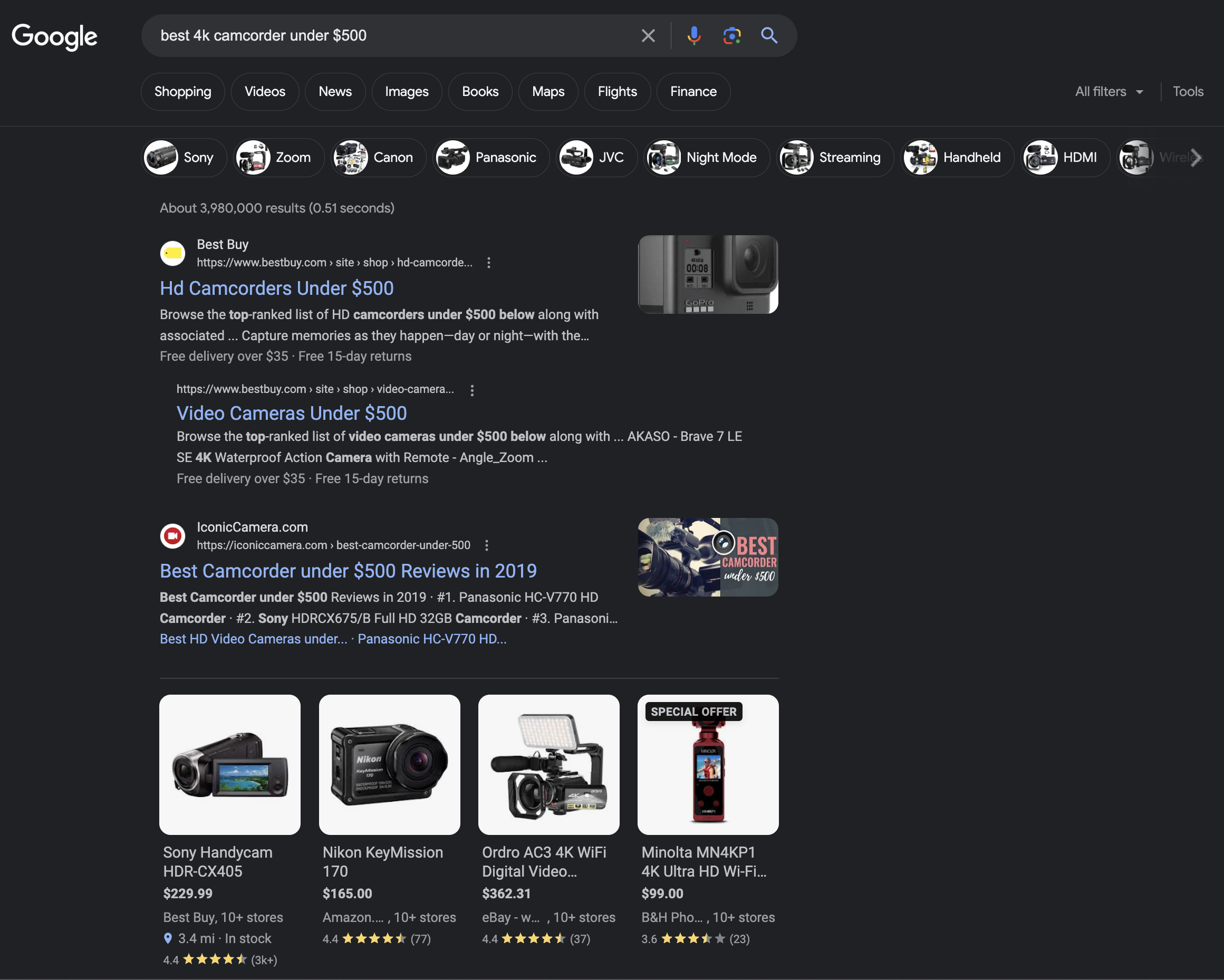 Screenshot from Google, May 2023
Screenshot from Google, May 2023On mobile, SGE generates advice and a lot of suggestions on what camcorders to purchase before showing organic search results.
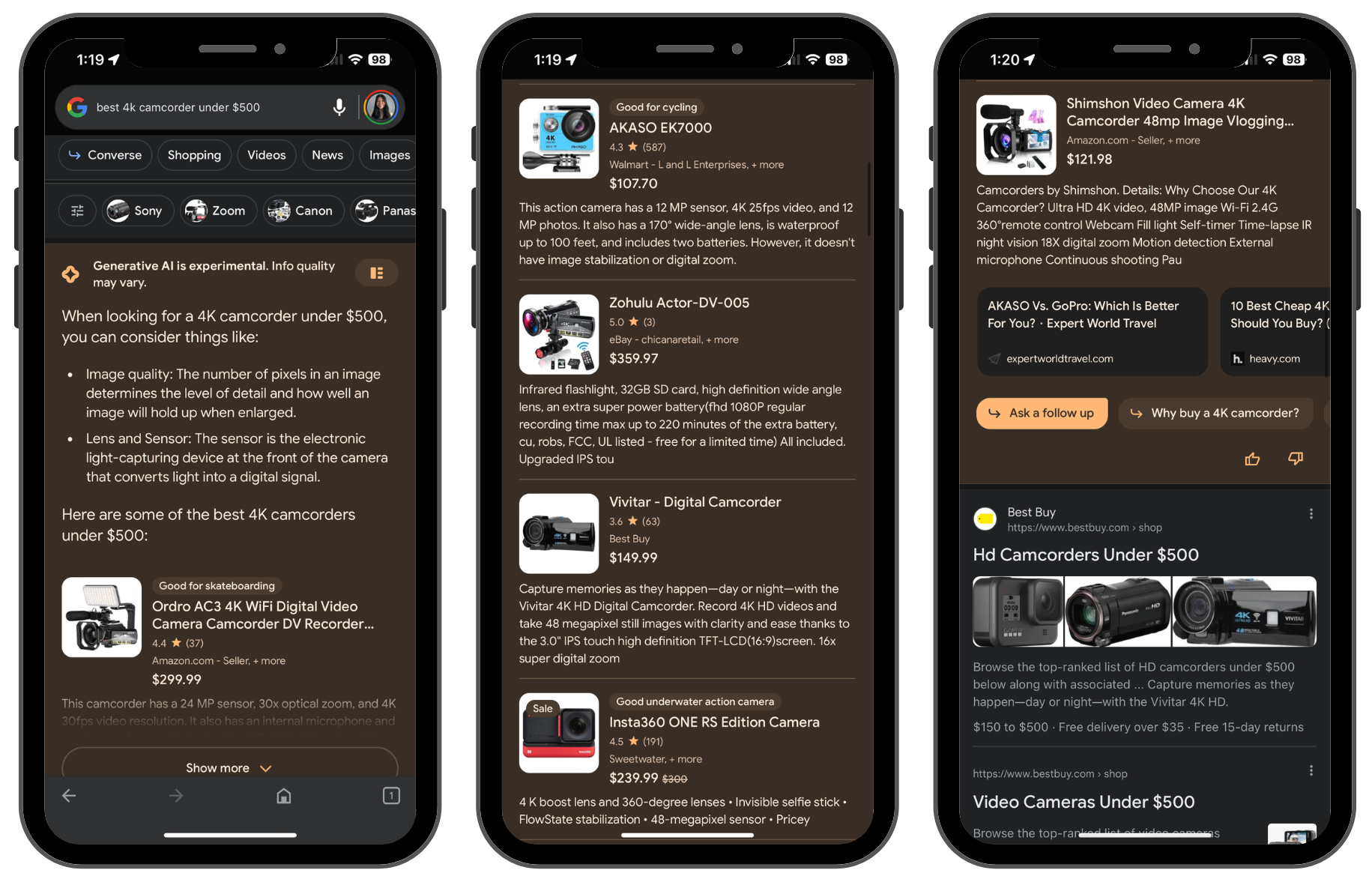 Screenshot from Google, May 2023
Screenshot from Google, May 20235. SGE For SERPs With Product Details & Store Listings
When inquiring about a specific feature of a product, SGE can give you precise details, followed by reviews and the best purchasing options.
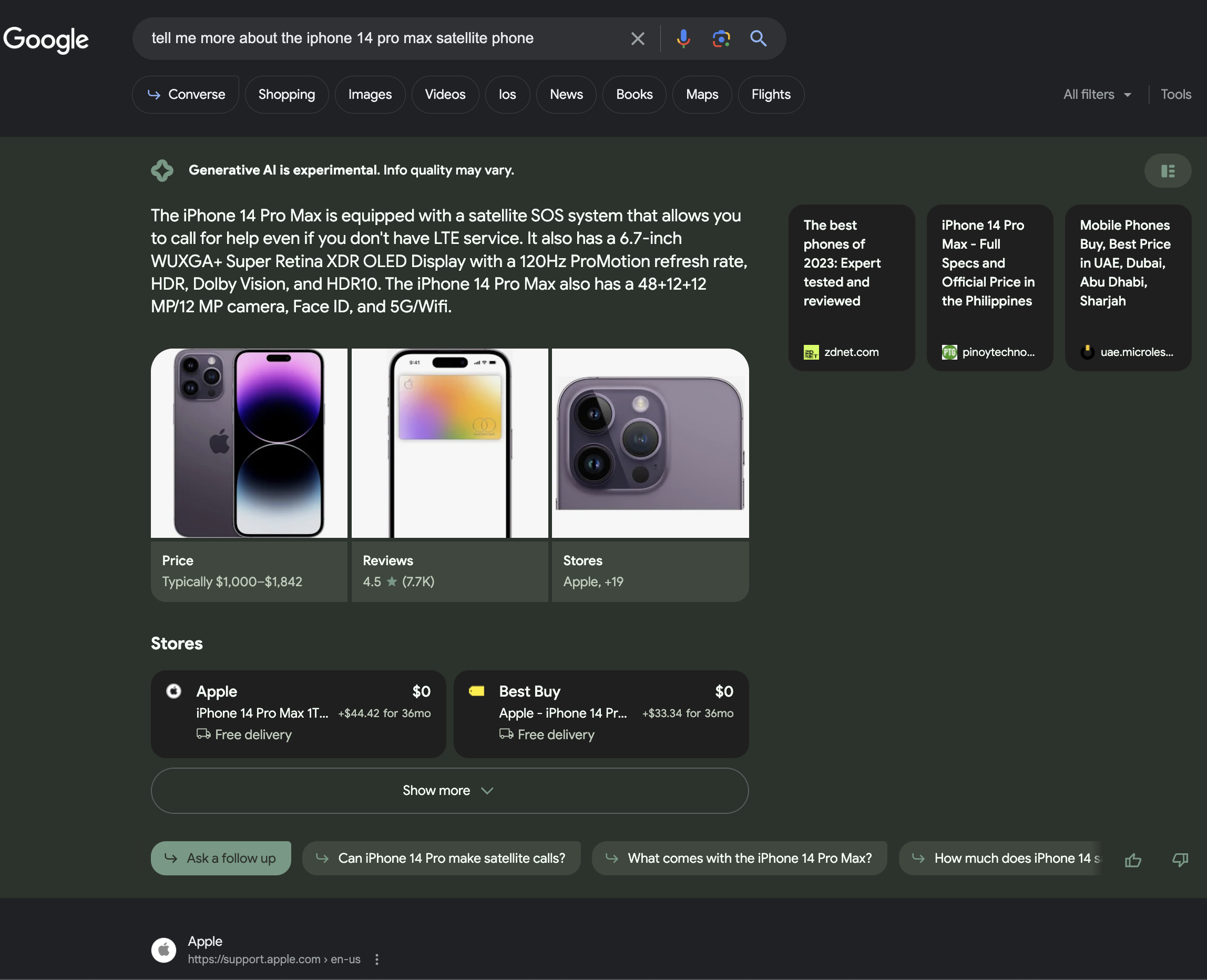 Screenshot from Google, May 2023
Screenshot from Google, May 2023Typical search results would focus on content from the brand, followed by people also ask and organic search results.
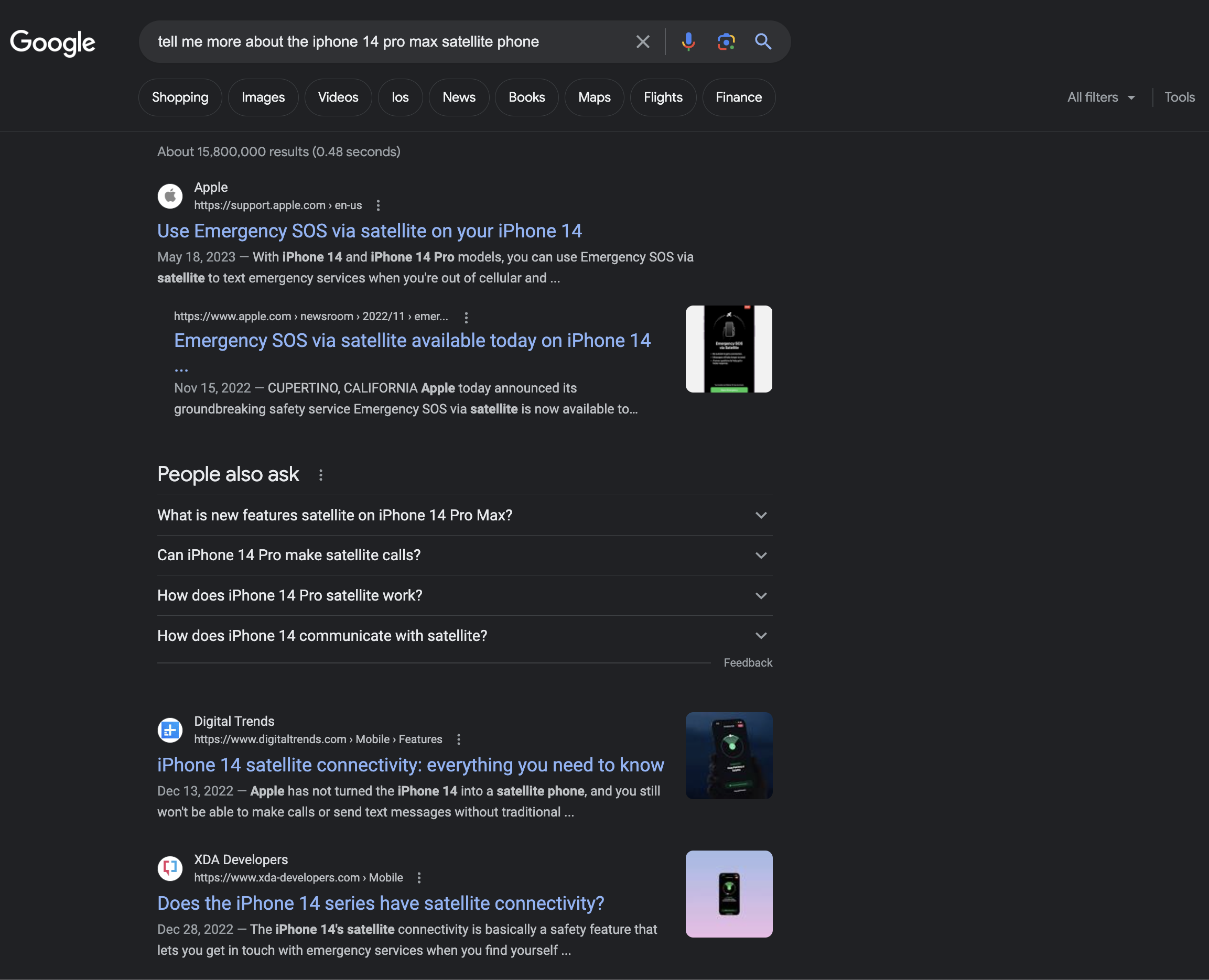 Screenshot from Google, May 2023
Screenshot from Google, May 2023The mobile SGE response also includes a list of stores before returning to the official website in organic search results.
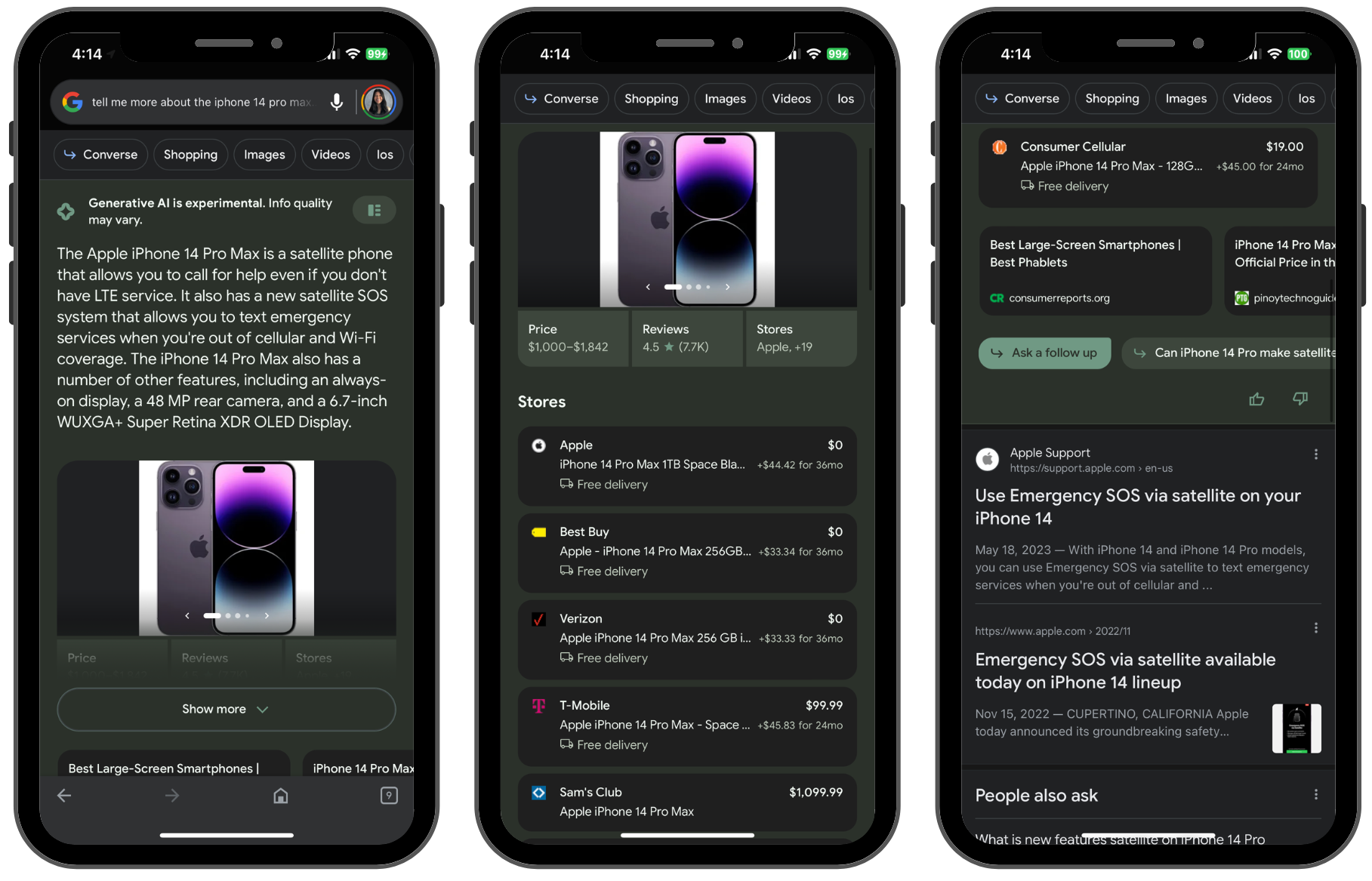 Screenshot from Google, May 2023
Screenshot from Google, May 20236. SGE For SERPs With Sponsored Ads & Featured Snippets
For a broad search on link building, SGE offers a definition based on six sources about the topic.
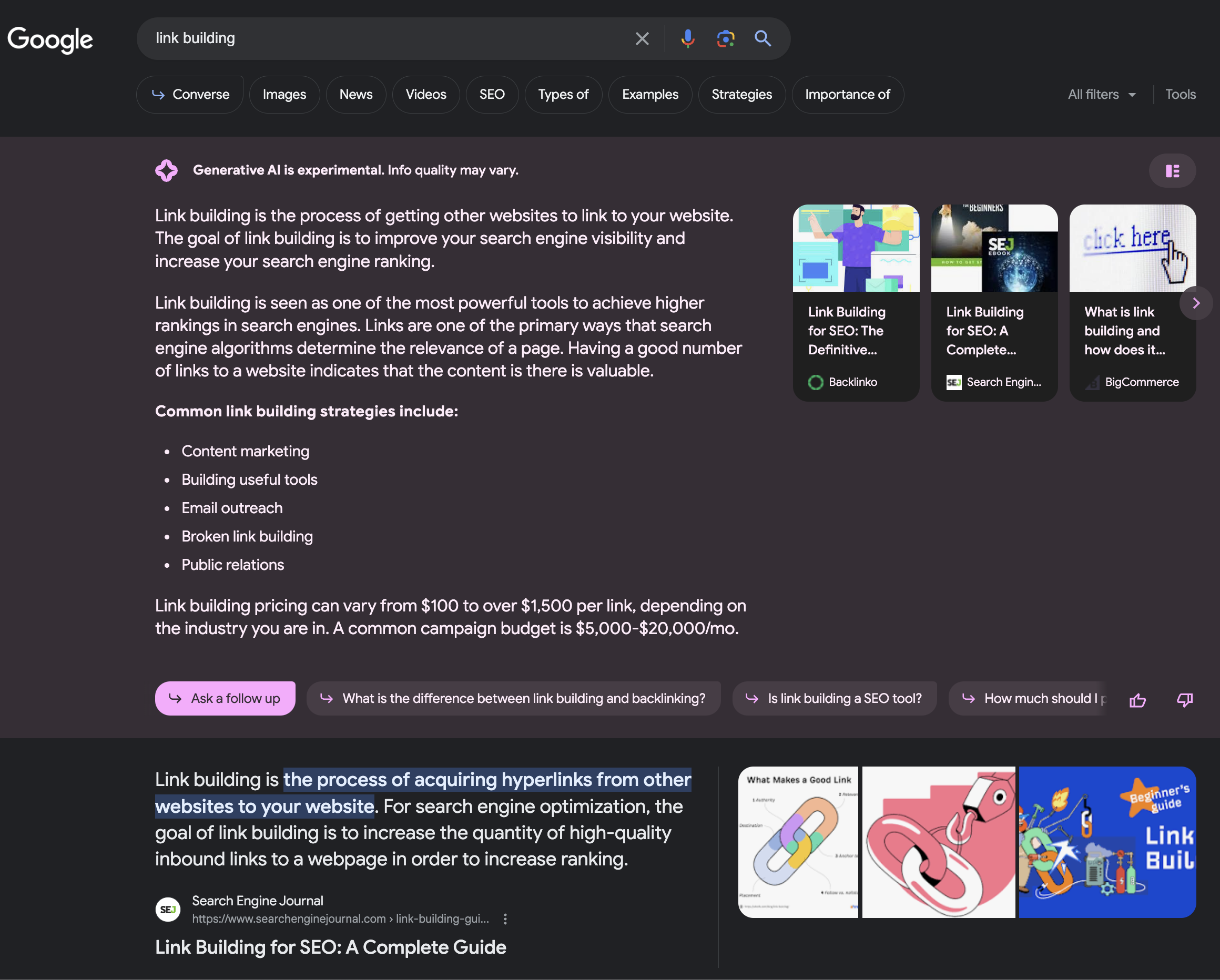 Screenshot from Google, May 2023
Screenshot from Google, May 2023Google SERPs would typically show several sponsored results from Google advertisers, followed by a featured snippet, people also ask, and organic search results.
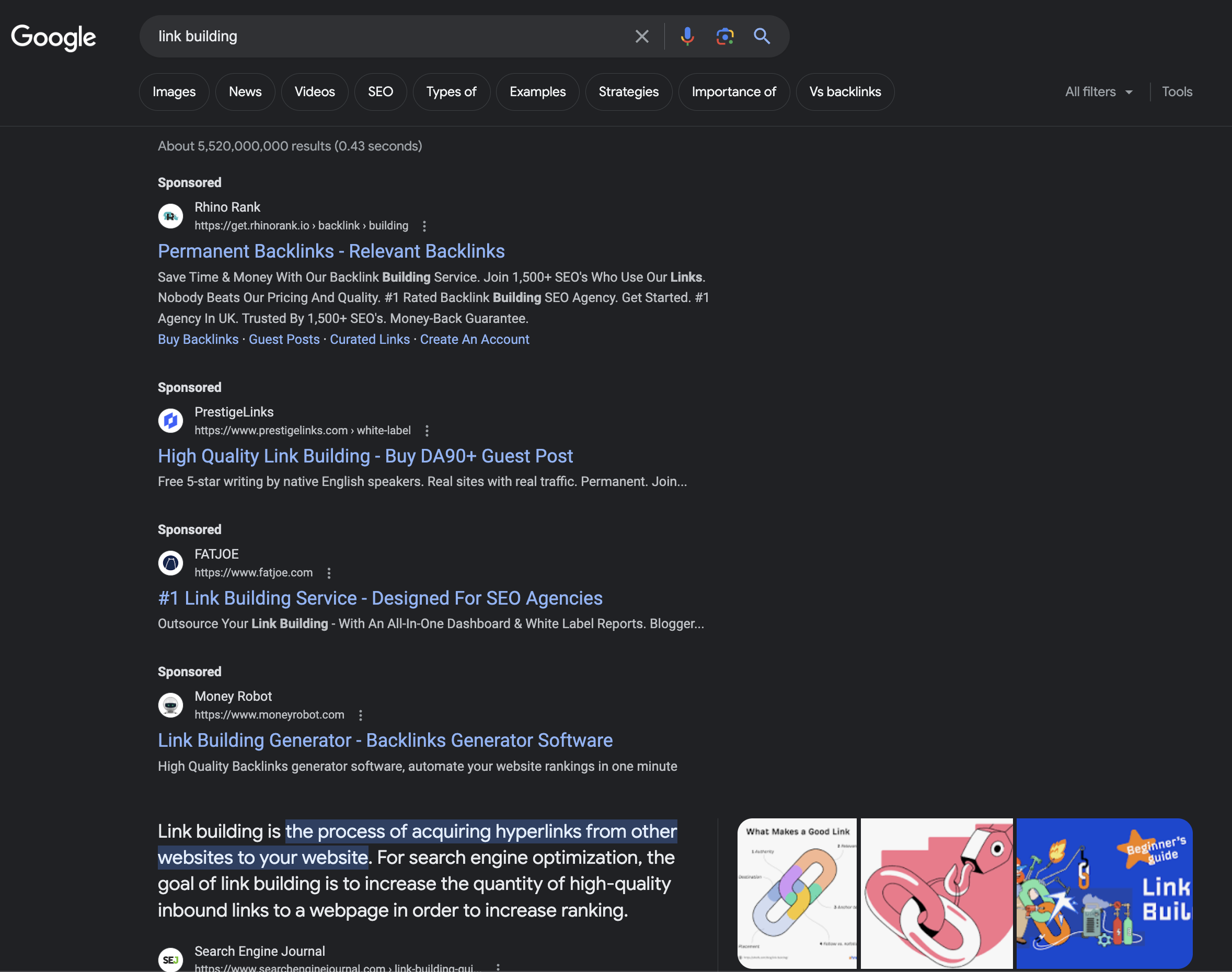 Screenshot from Google, May 2023
Screenshot from Google, May 2023The generative AI response from the Google app was similar, although it used eight sources instead of just six.
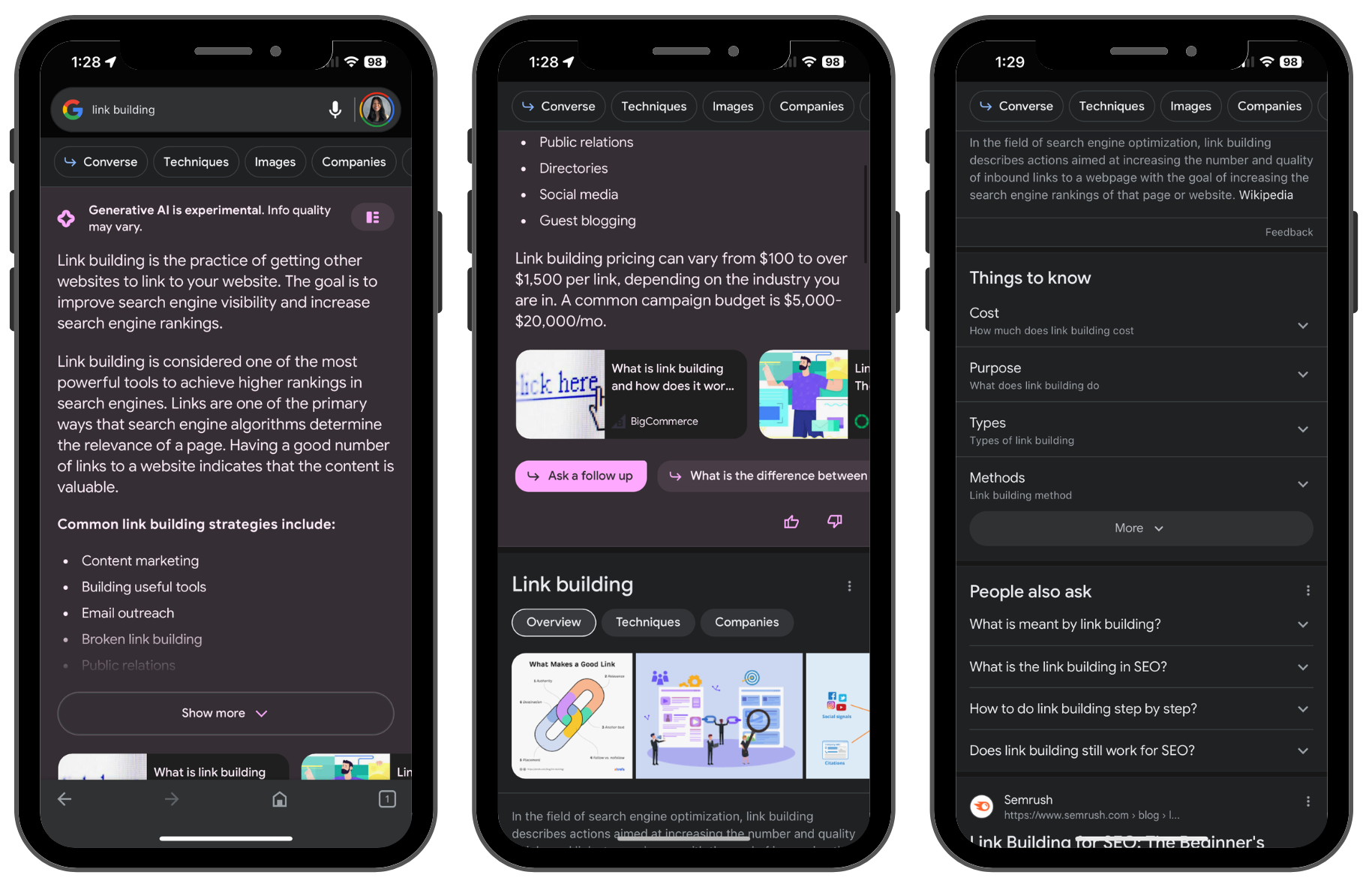 Screenshot from Google, May 2023
Screenshot from Google, May 20237. SGE For News And Top Stories
When searching for the latest AI news, SGE pulls from the five most recent news sources.
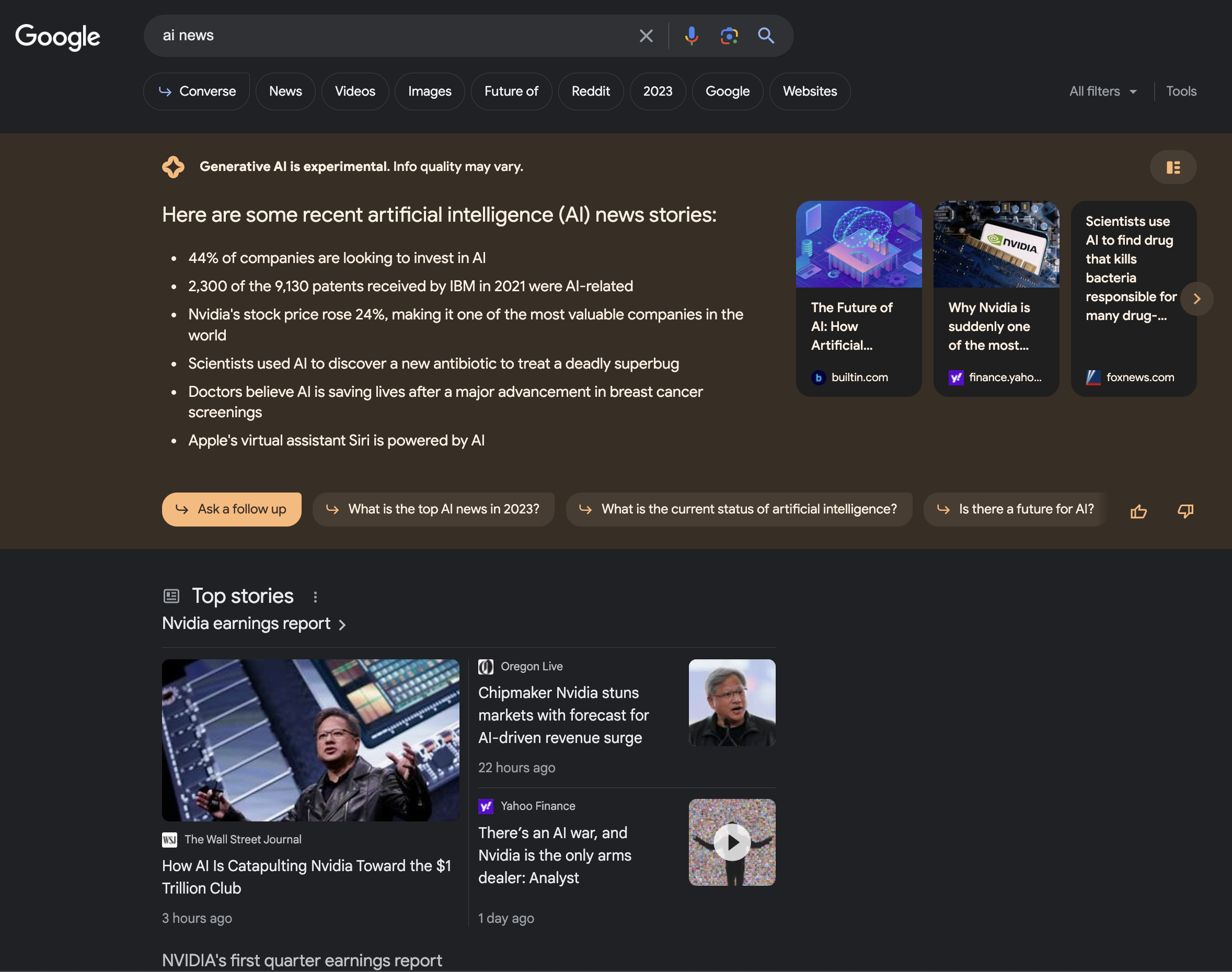 Screenshot from Google, May 2023
Screenshot from Google, May 2023Google SERPs, on the other hand, typically display seven of the top headlines related to the search query.
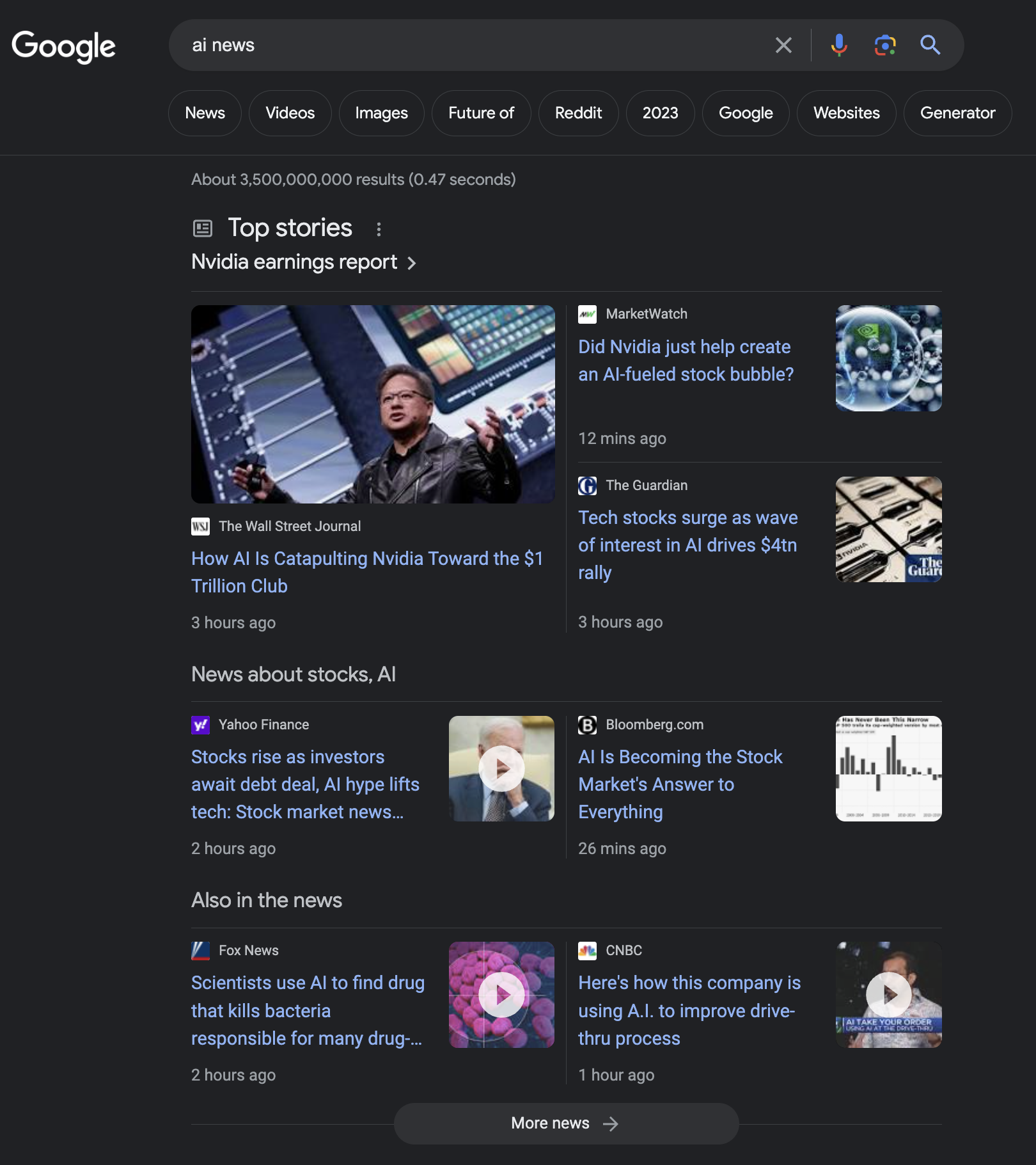 Screenshot from Google, May 2023
Screenshot from Google, May 2023On mobile, SGE serves up six of the most recent new sources, followed by a different selection from the news and top stories results.
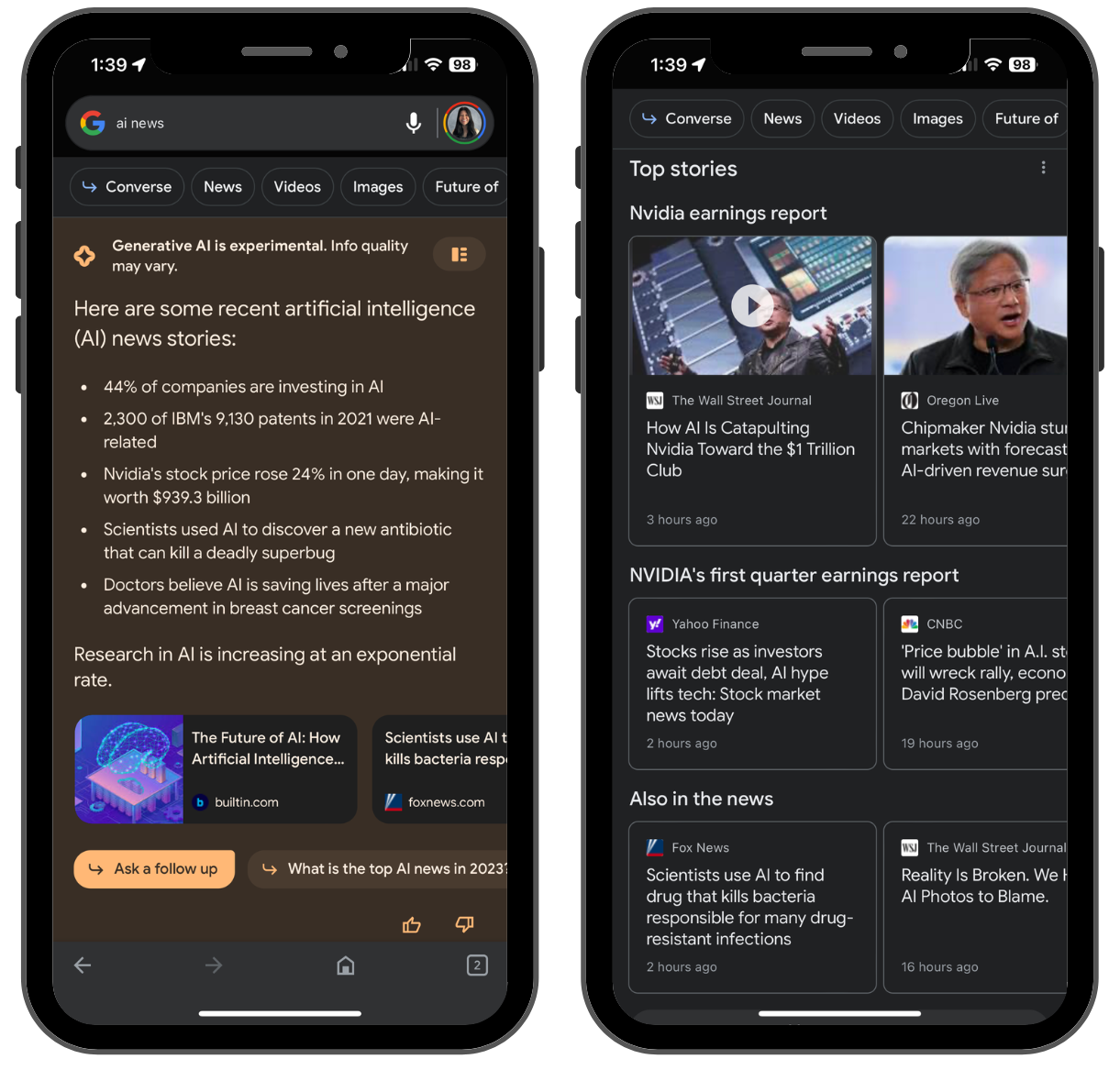 Screenshot from Google, May 2023
Screenshot from Google, May 20238. SGE For SERPs With Images
If you want a new pack of social media logos for your website, you must be more specific about SGE. Its response is the definition of social media logos from articles around the web.
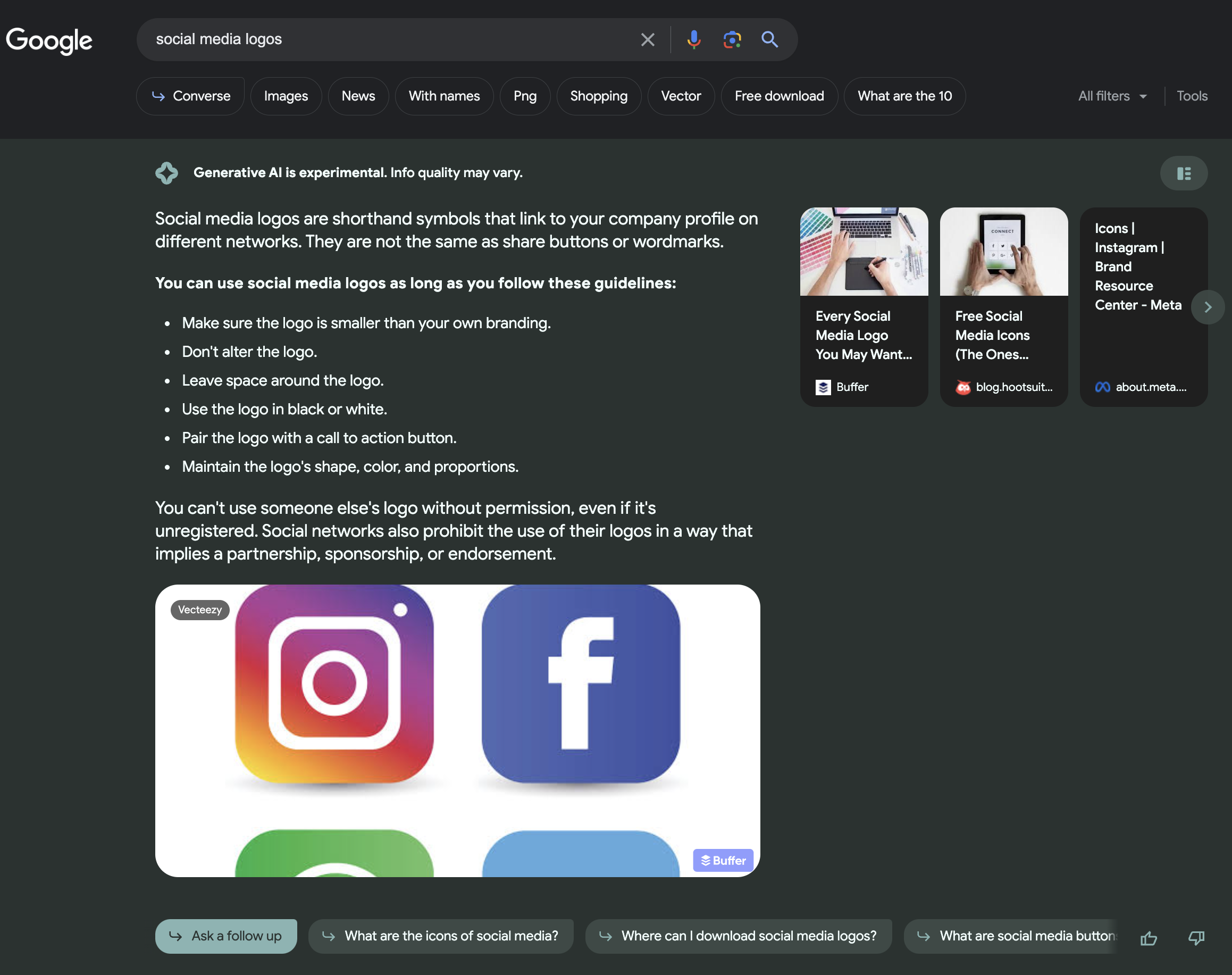 Screenshot from Google, May 2023
Screenshot from Google, May 2023Standard Google search results begin with image results from websites that offer social media logo packs and the ability to filter image results by criteria such as a transparent background.
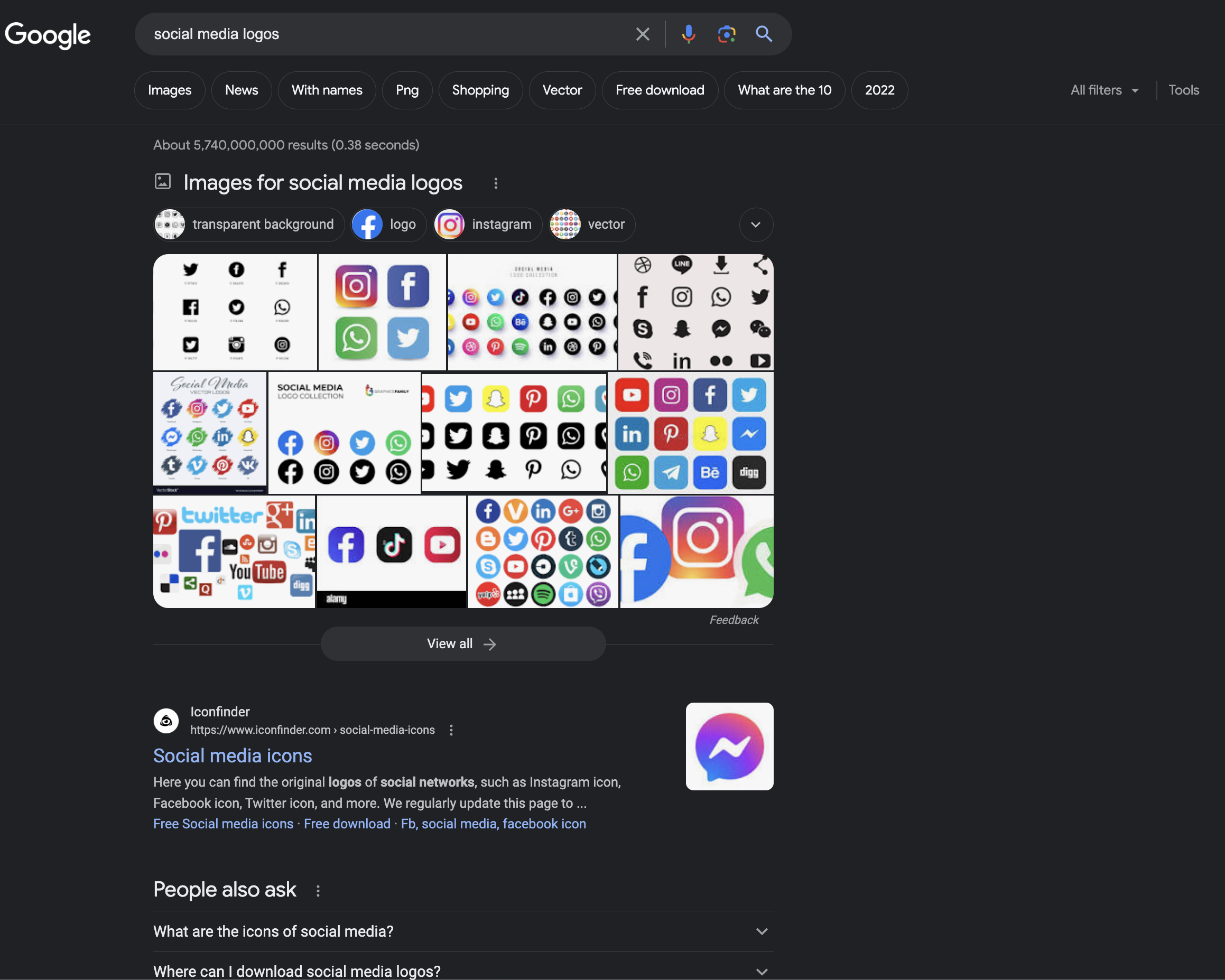 Screenshot from Google, May 2023
Screenshot from Google, May 2023The generative AI provides a similar definition and guidelines for using social media logos on mobile, followed by images, people also ask, and organic search results.
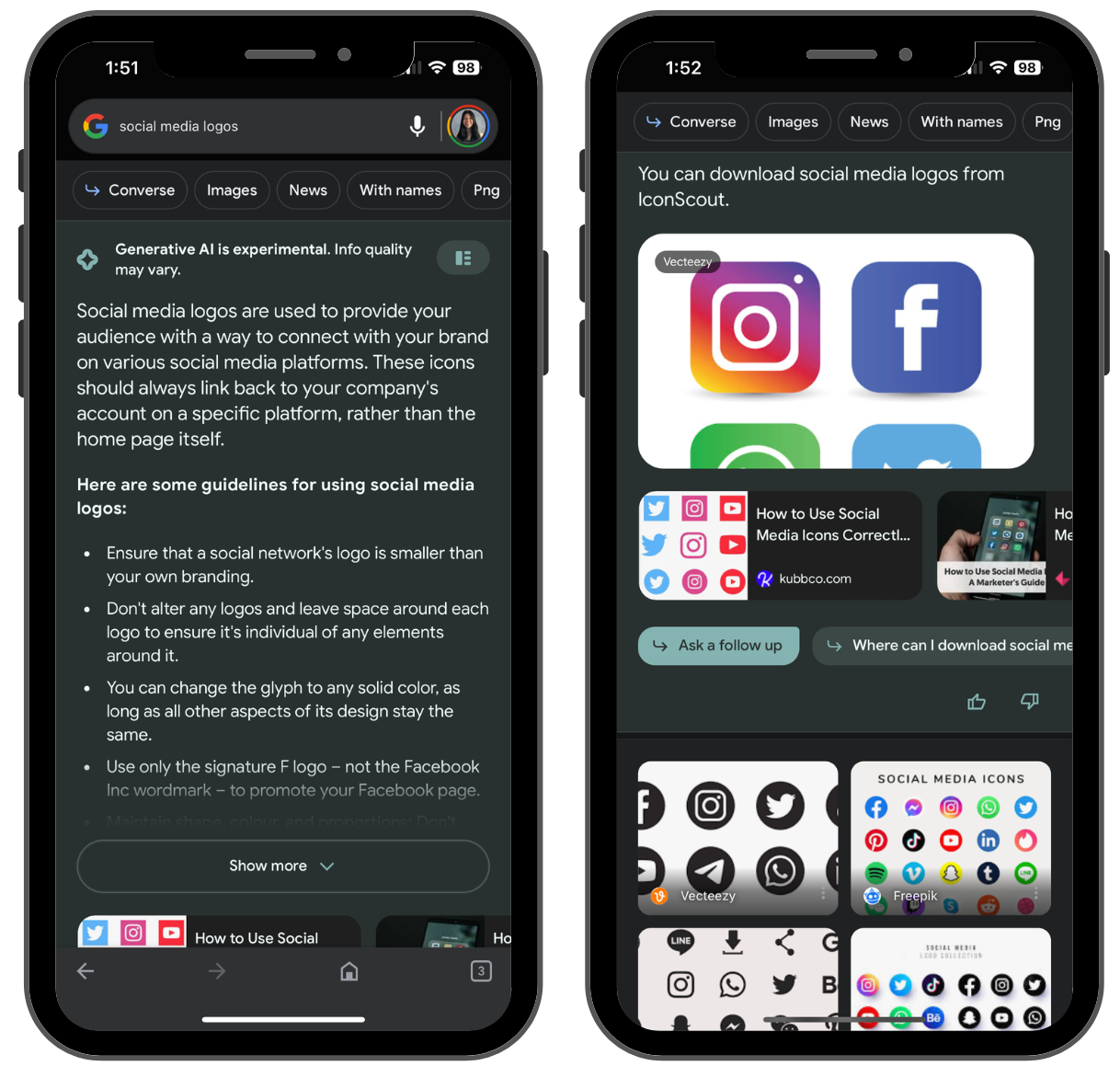 Screenshot from Google, May 2023
Screenshot from Google, May 20239. SGE For SERPs With Video
Do you need to fix a broken pair of glasses? SGE offers advice from three sources.
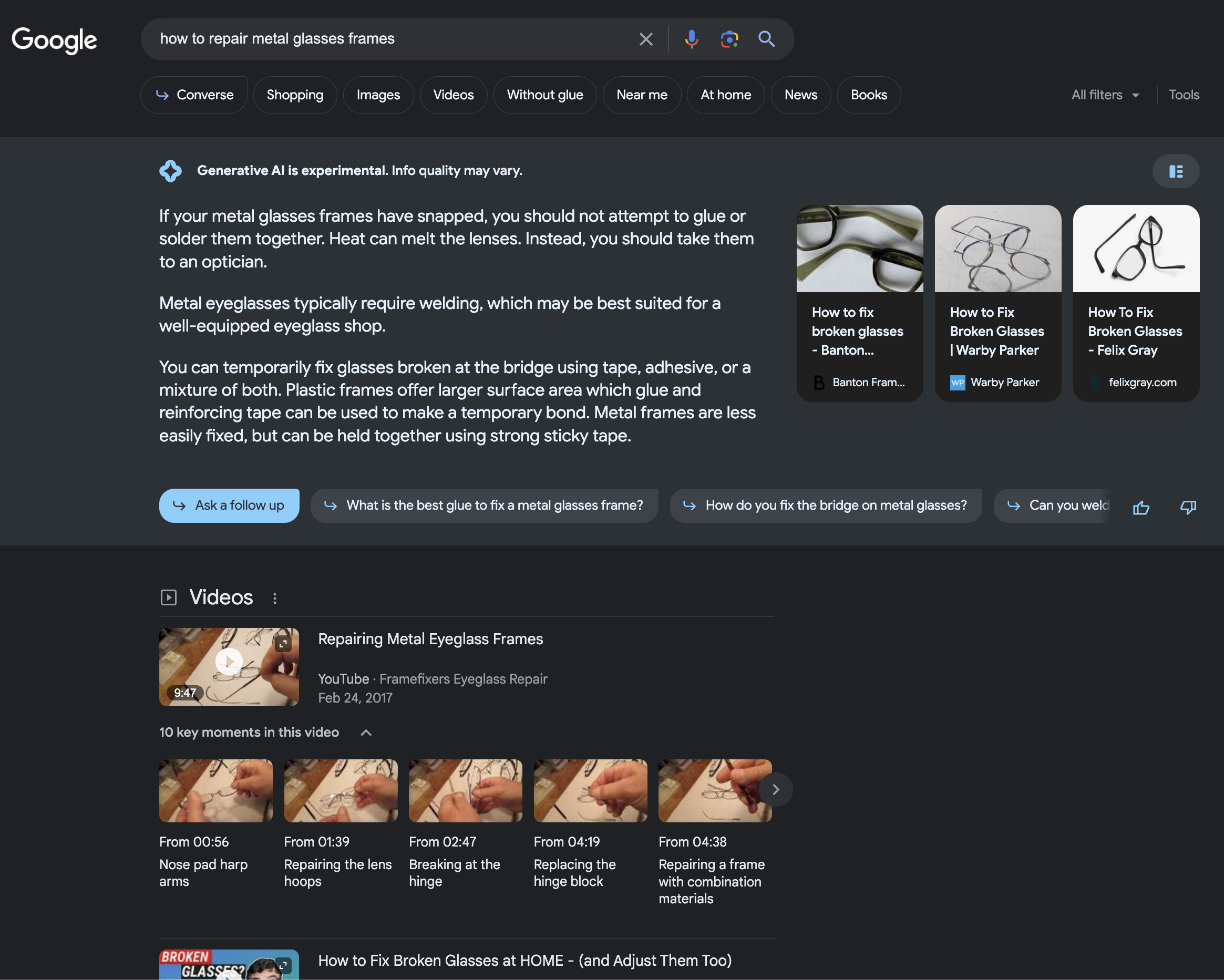 Screenshot from Google, May 2023
Screenshot from Google, May 2023Without SGE, Google offers several videos with key moments to choose from based on the part of the repair you need assistance with, followed by people also ask, more YouTube videos, and organic search results.
The Google app offers AI-powered advice, followed by a featured snippet, people also ask, organic search results, and videos.
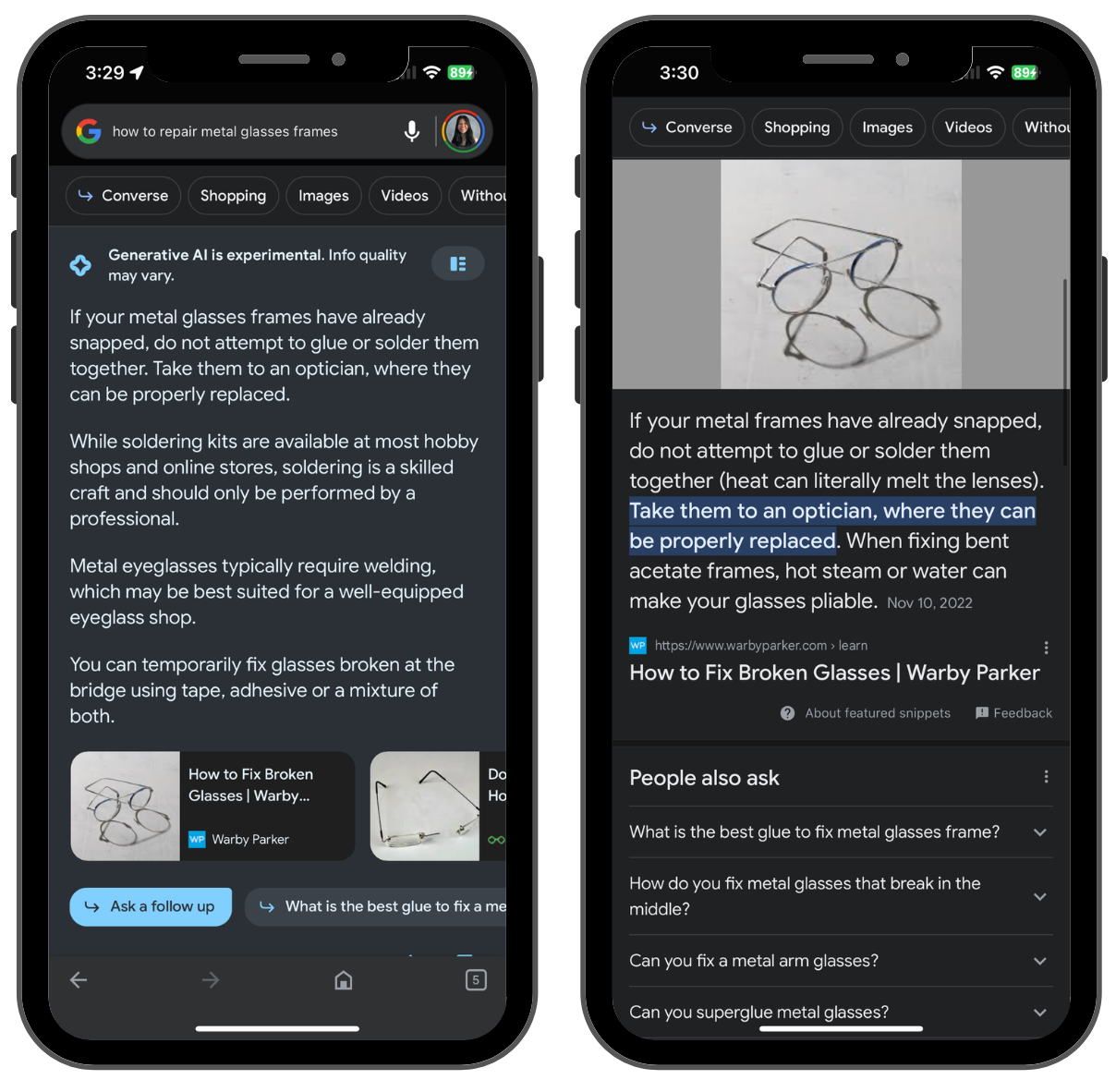 Screenshot from Google, May 2023
Screenshot from Google, May 202310. SGE For SERPs With Events
Want to see what events are coming up in your area? This SGE response for upcoming events in San Francisco offers a long list of suggestions from five sources.
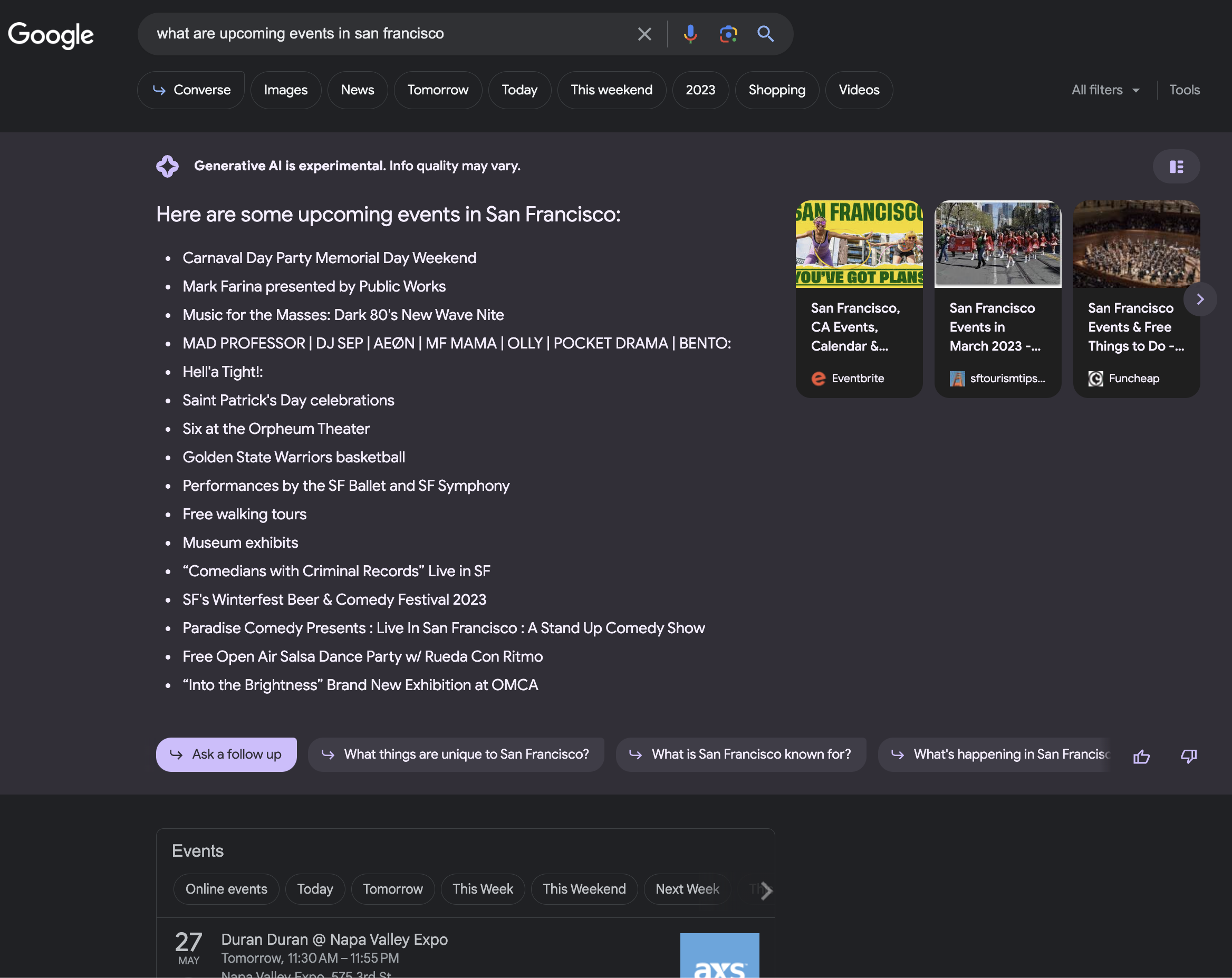 Screenshot from Google, May 2023
Screenshot from Google, May 2023Google search results commonly provide the following list of events in calendar format.
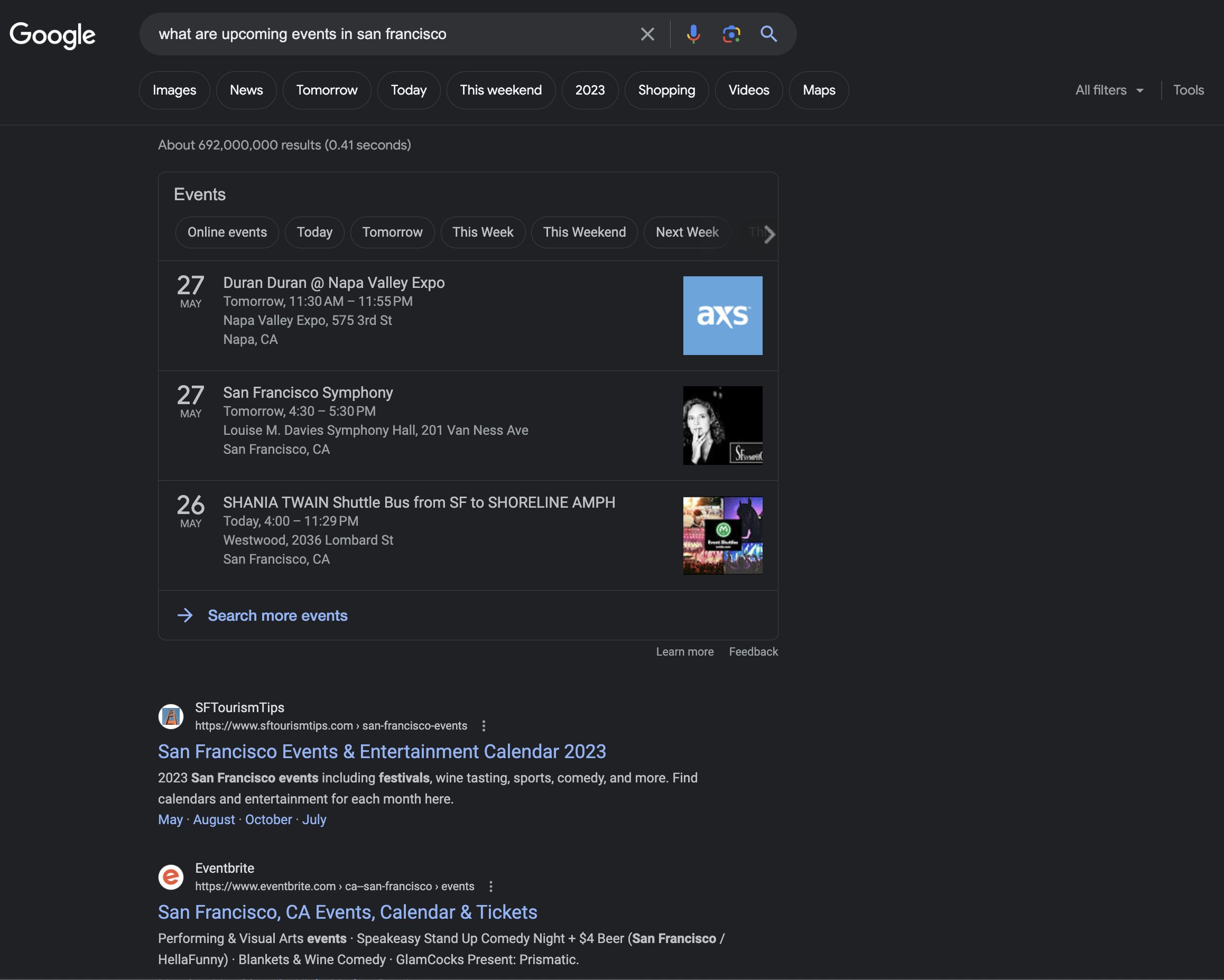 Screenshot from Google, May 2023
Screenshot from Google, May 2023The SGE experience on mobile offers a similar list of events with more sources, followed by the events list calendar and organic search results.
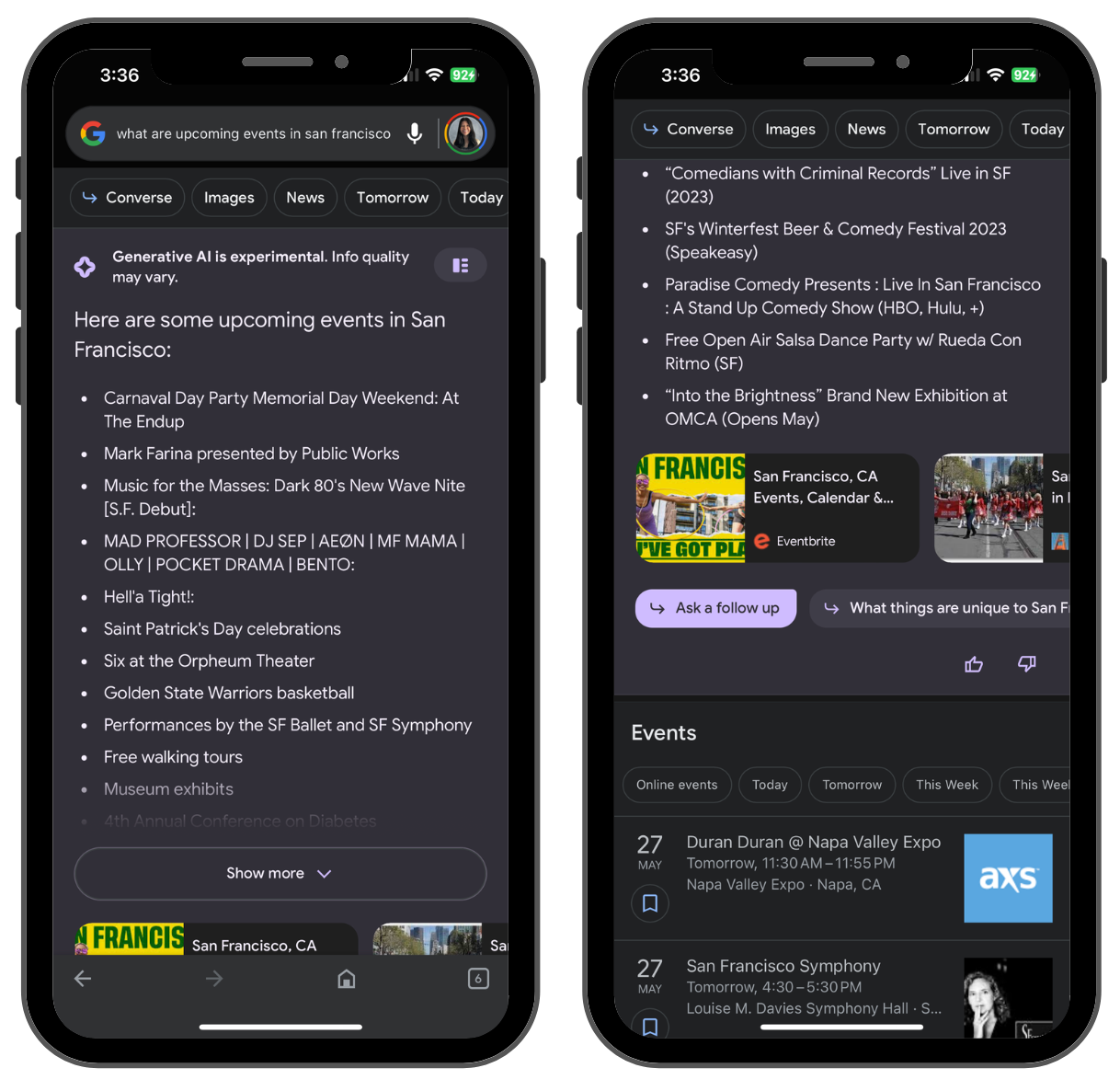 Screenshot from Google, May 2023
Screenshot from Google, May 202311. SGE With Code Tips
Some queries, such as this for a Python SEO function, will result in a response from Code Tips if enabled in Search Labs.
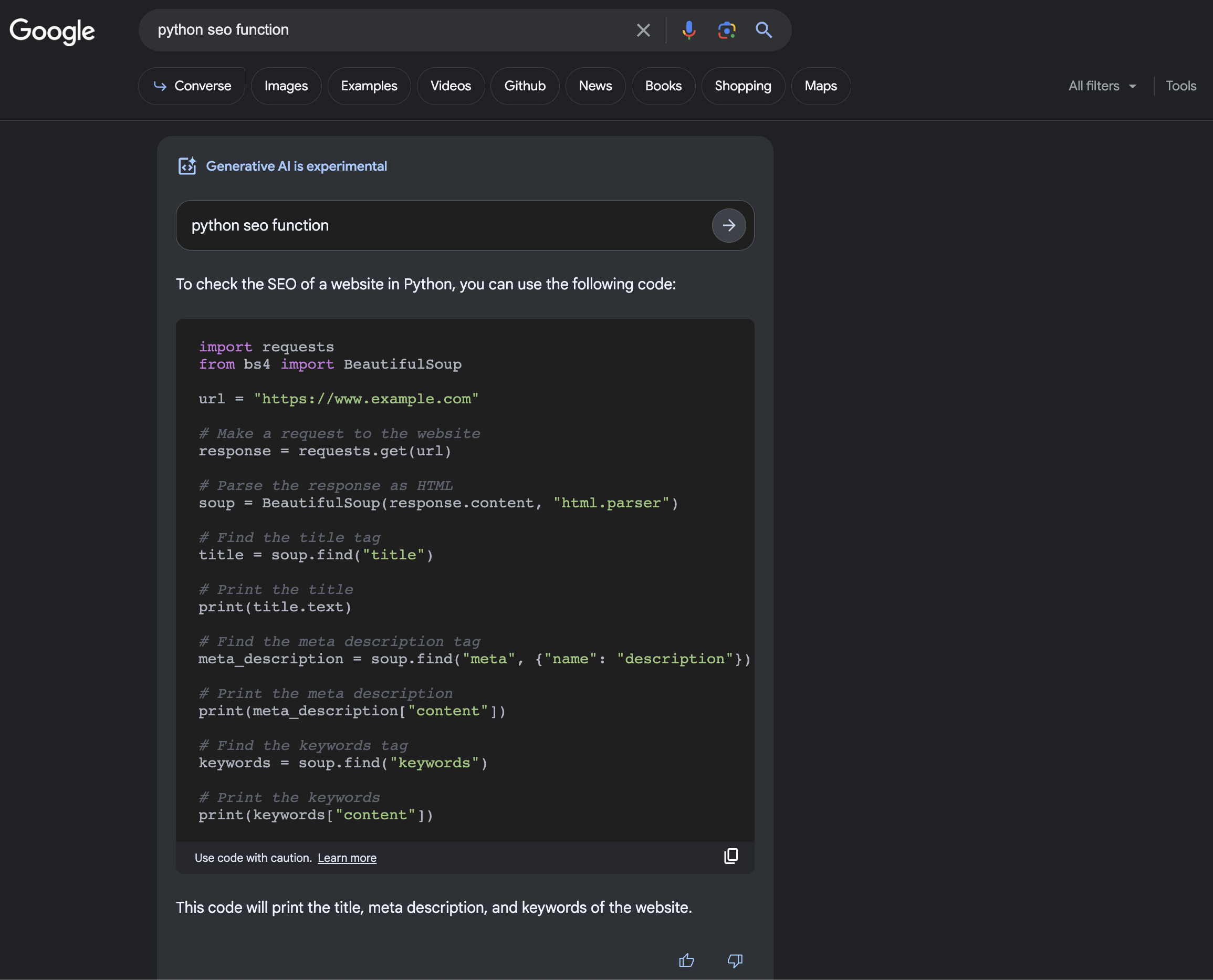 Screenshot from Google, May 2023
Screenshot from Google, May 2023Generative AI offers an immediate solution. Typical Google search results would give you links to find similar solutions.
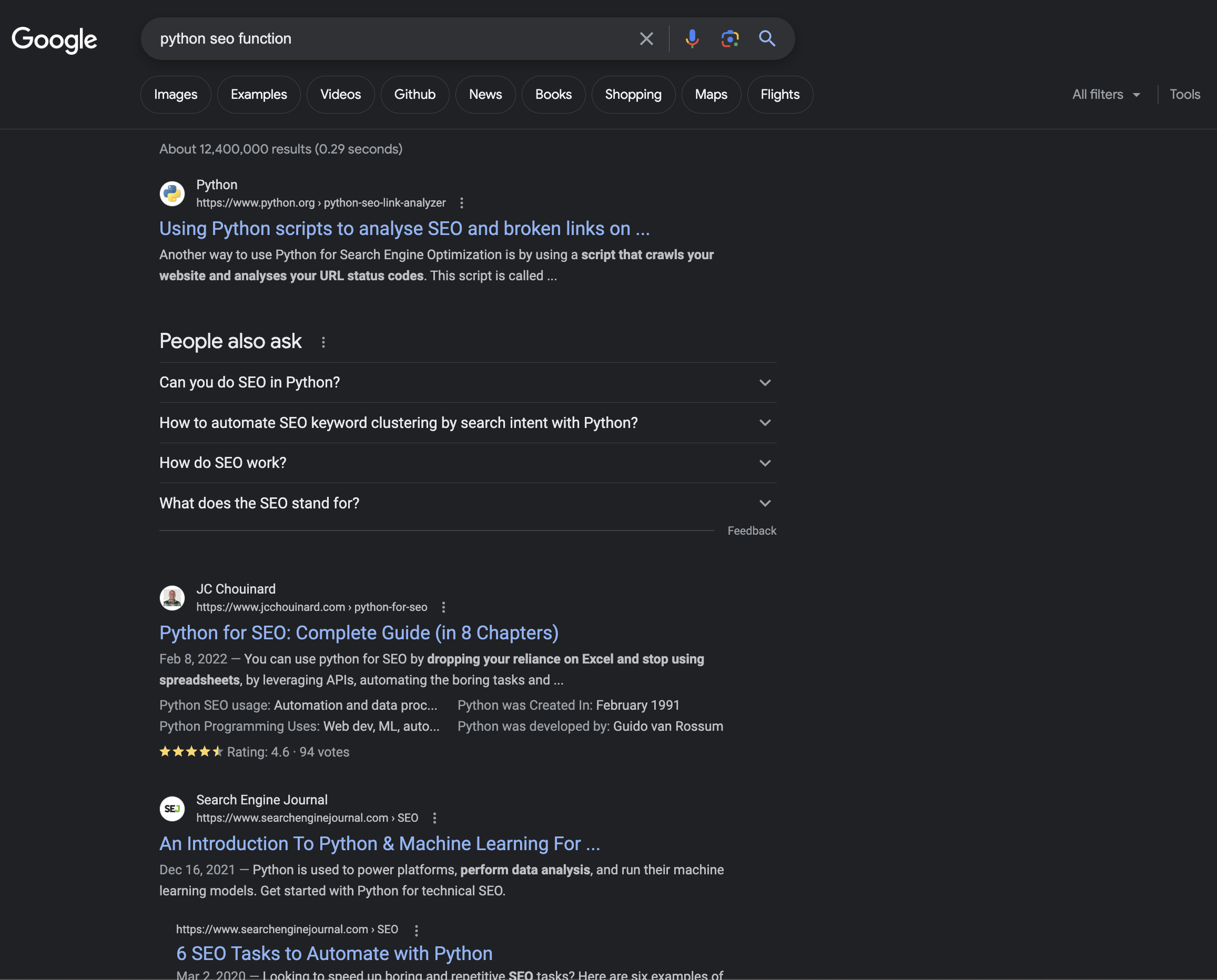 Screenshot from Google, May 2023
Screenshot from Google, May 2023The Google app will also provide Code Tips for mobile users, followed by people also ask and organic search results.
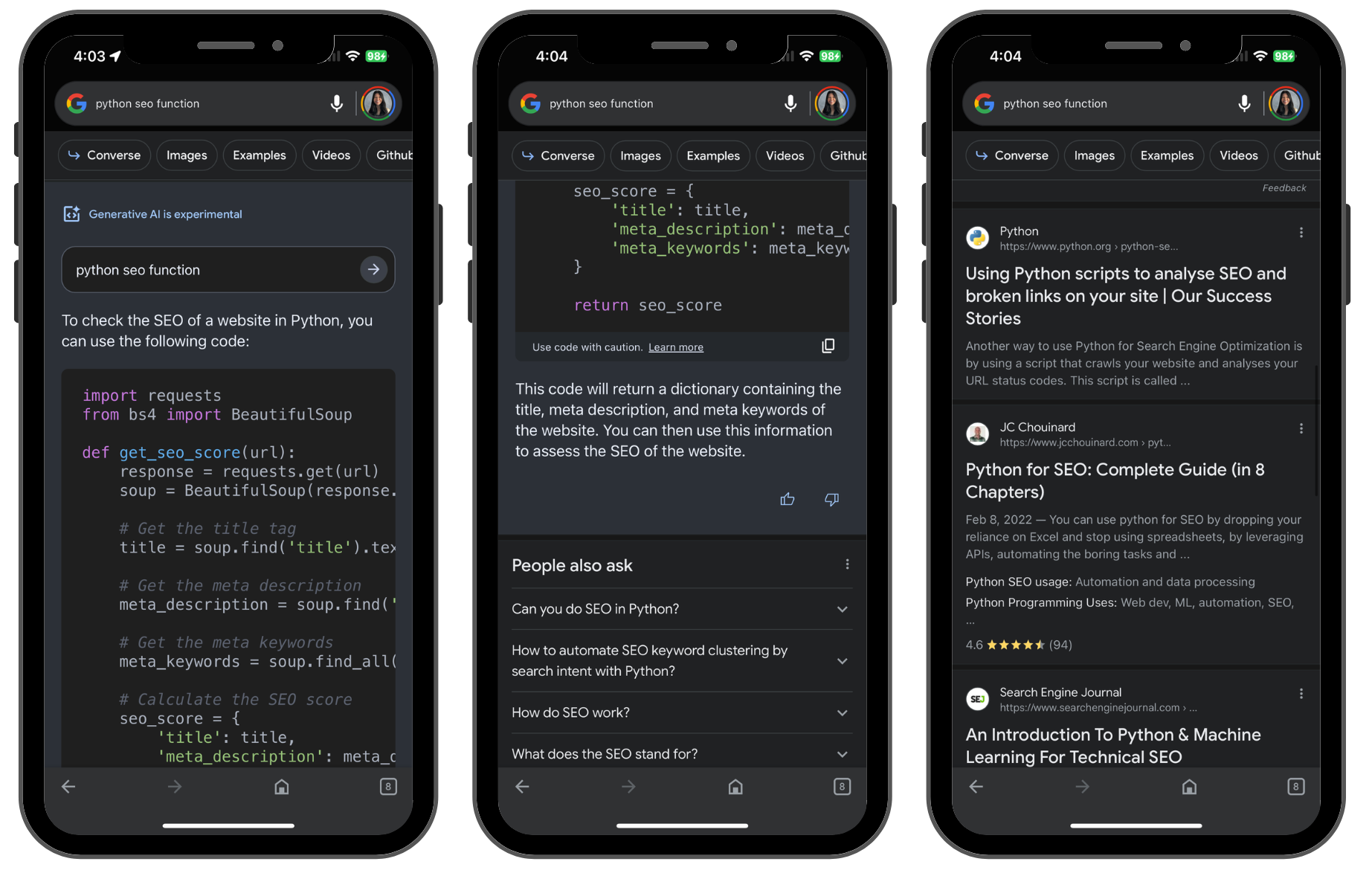 Screenshot from Google, May 2023
Screenshot from Google, May 202312. SGE For Unavailable Queries
Some search queries will (ironically) result in the message, “An AI-powered overview is not available for this search.”
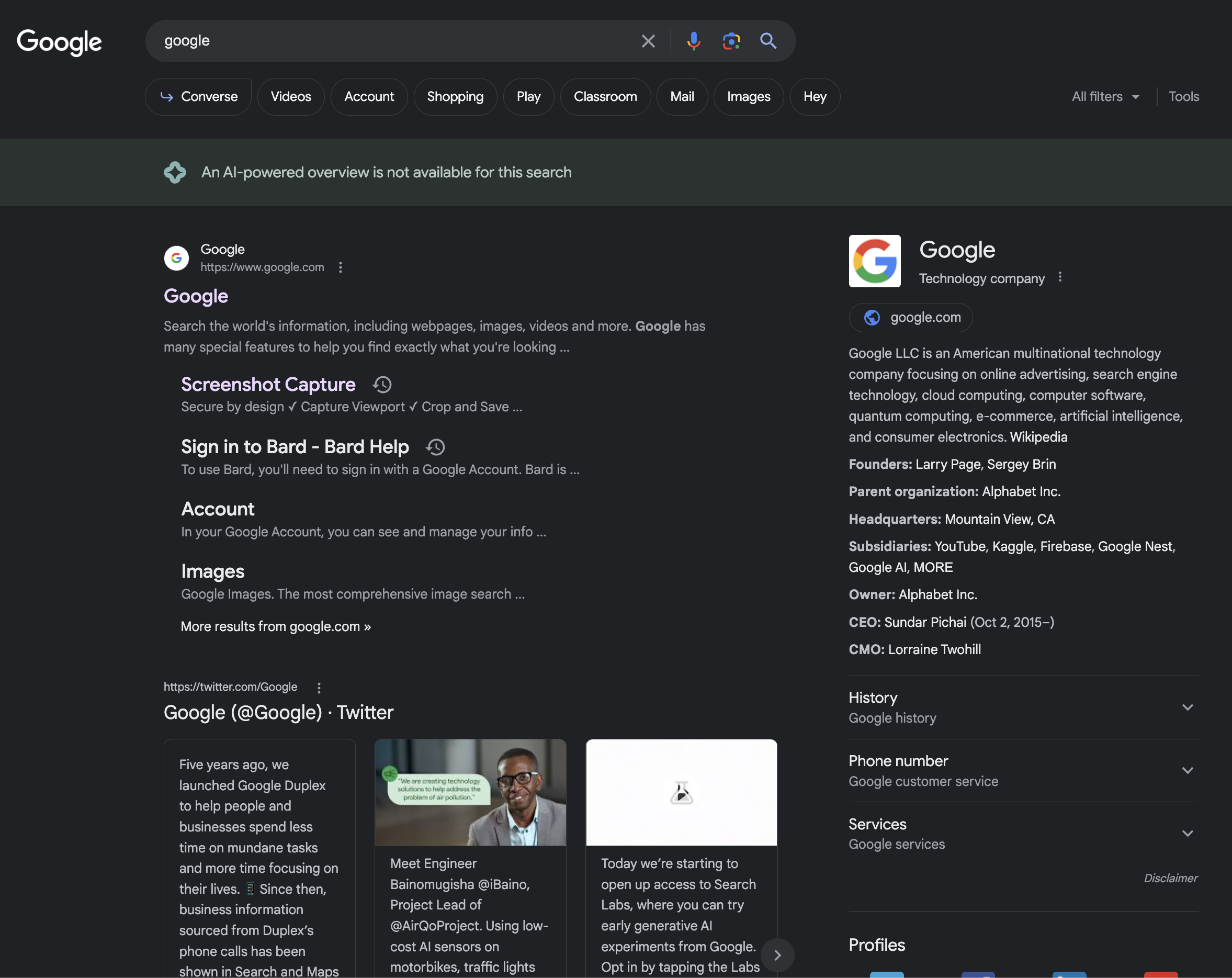 Screenshot from Google, May 2023
Screenshot from Google, May 2023Initial Observations About The Search Labs Preview Of Google SGE
Google seems to be placing publishers first in its new generative AI search experience.
Most AI-powered overviews included information from three to five publisher websites instead of the official website or social profiles for the topic at hand. While this could help increase traffic for publishers, it may decrease traffic for brand-owned properties.
When a generative AI response appears in search results on a desktop or mobile device, it pushes SERP features like featured snippets, images, videos, people also ask, knowledge panels, and organic search results below the fold.
While some SGE answers seemed to provide less value than typical SERP features, it’s important to remember that this is just the beginning of the future of AI search.
Featured image: 13_Phunkod/Shutterstock
 seolounge
seolounge